Study hall becomes part of schedule. A2
LIFESTYLE
Impact of Summer blockbusters. B1
Tuesday, Sept. 19, 2023

Study hall becomes part of schedule. A2
Impact of Summer blockbusters. B1
Tuesday, Sept. 19, 2023
Text messages between Superintendent Don Austin and school board trustee Shana Segal seem to show a high degree of tension at the upper levels of district administration. Te texts, obtained by parent Ginne Noh through a California Public Records request, show Austin’s anger toward Segal’s former campaign manager Gayle McDowell after McDowell made a social media post saying Austin should be fred.
In her post, McDowell said she was hoping for Austin to be replaced as superintendent soon. "Unfortunately we need ‘three’
McDowell wrote in the post. “My hope is that with enough public pressure, they might be swayed, but we need to gather this momentum.”
Using online messaging, Austin told Segal she needed to own the statements from McDowell and that he was ready to leave the district.
“Seriously, just own it, and it will be easier,” Austin said in the text exchange with Segal. “I am ready to go out soon. I can’t take the constant lies and attacks. You guys can pick the next person. I’m sure it will be everything you guys want. I’m done.”

Austin was granted a four-year contract extension by the board of education this
For her part, Segal said McDowell’s words don’t necessarily represent her point of
“I cannot control what (other people) do or write,” Segal said in response to Austin’s message. “I am not campaigning, and she is no longer my manager.”
Austin said this incident shows how criticism he receives, from what he calls a vocal minority, ects his personal life.

“I do everything in my power to protect all of us,” Austin said. “I take the blame for things I don't even touch. I test my messages for tone and take the high ground. I don't let people attack our staf. For that, my kids cry reading comments.”
In an email to Te Campanile, Austin said other school ofcials are also facing community attacks, but
“Like many PAUSD leaders before me such as superintendents, principals and board members, I gave the vitriol more attention than it deserved,” Austin said. “Our successes shouldn’t be overshadowed by divisive narratives.”
Austin also said he has apologized to Segal for his text exchange with her.
“In May, I extended a sincere apology to Ms. Segal for not
To provide more time for teacher collaboration, PAUSD added six late-start Mondays to the school calendar. For Paly students, this means the third Monday of each month will start at 10:15 a.m., classes will meet in 35-minute blocks and the school day will end at 3:50 p.m.
Principal Brent Kline said the schedule changed to give teachers time to collaboratively review the curriculum and track student academic growth. During these Mondays, Kline said teachers will use evaluations of student progress to improve instructional practice.
“ Te purpose of it is to continue to provide our teachers opportunities to develop their craft and align their work and thinking with building goals for student achievement,” Kline said. “ Te cycle of learning includes how they assess students and how we change our practice based upon our assessments.”
History teacher Adam Yonkers said he is optimistic about the new opportunities to discuss with his colleagues. He said he particularly appreciates the addition of these late-start days because the district previously gave staf a limited amount of time to meet for group discussions.
“When we are talking about diferent initiatives, whether it's adopting a new curriculum, grading practices or issues of equity, there was not a lot of time for the staf to get together and do that work,” Dibrienza said.
Junior Keerath Pujji said the schedule change is also favorable for students because Mondays tend to be more demanding.
“Mondays are typically very stressful days because it's the start of the week, and you always get more homework than normal days,” Pujji said. “Having bufer time to be able to sleep in and to start the week positively is going to be great.”
ART BY ANYA RASMUSSEN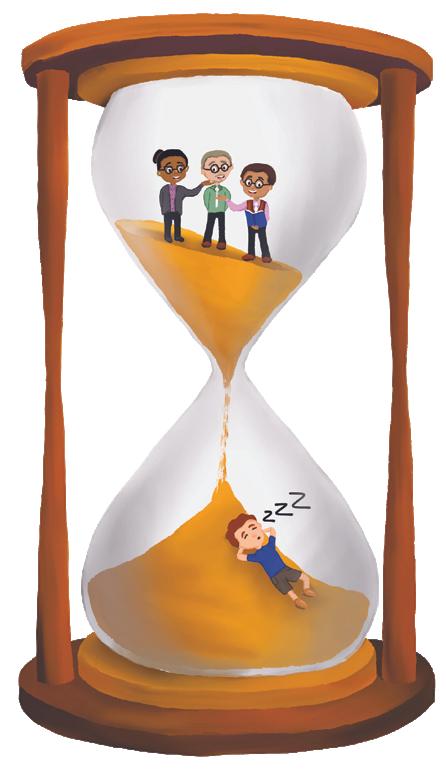
“In my history of being a teacher here, there hasn’t been a lot of carved-out time to work with a team of teachers, and I welcome more time,” Yonkers said. “(Late Start Monday) is a change that's going to give teachers more of a chance to collaborate, which is always good in terms of getting teachers to talk to each other about what's working and what's not.”
Similarly, School Board President Jennifer Dibrienza said the current periodic staf collaboration meetings, called Professional Learning Communities, are too short. She said this newly allocated collaboration time will give teachers a chance to adjust their practices.
Freshman Dante Velasquez isn’t quite as enthusiastic about the change. He said while he will enjoy the opportunity to sleep in, he is concerned about the disruption a diferent start time could create in students’ weekly routines.
“A lot of people might come to school late and some people might not be able to have their parents drive them,” Velasquez said.
And Yonkers said he knows there will be initial obstacles formed by 35-minute class periods, but said teachers will eventually adapt.
“It will be an adjustment because any sort of change to the schedule always creates a bit of shortterm disruption,” Yonkers said. “But long term, it seems like a good idea.”
Dibrienza said the diference from the normal 45-minute Monday classes is minor.
“Teachers will probably use (shorter class periods) as a time to check in with students, do something small and have some more face time with their students, but it is not that diferent,” she said. Ultimately, Dibrienza said the additional teacher collaboration time will produce a positive outcome for both students and teachers.
“Teachers serve students better when they work with other teachers, exchange ideas and work together to come up with plans,” Dibrienza said. “ Te schedule change will serve everybody. Teachers will feel more prepared and students will get a better experience.”
the actions, words, lawsuits, petitions or postings of her campaign manager, friends, associates and donors, I am now assured that I can operate without fear of retaliation.”
Segal declined an interview request for this story.
Naveen Narayanaswami
Staf WriterRetired athletic director and football coach Earl Hansen, a mentor to numerous college and NFL players, is now the ofcial namesake for Viking Stadium.
Te stadium was ofcially renamed the Earl Hansen Viking Stadium during halftime of the Viking’s Sept. 9 home game against Sacred Heart Prep. Included in the renaming is funding for a new sound system and a repainted scoreboard.
Te halftime ceremony also celebrated Palo Alto’s frst state football championship in 2010, which earned Hansen ESPN RISE’s Cal-Hi Sports State Football Coach of the Year, the frst time a Paly coach won the award.
University of Michigan football head coach and Paly alumni Jim Harbaugh, who played football under Hansen, said he was excited his former coach was being honored.
“Coach Hansen has been not only a great coach but a pillar of the community," Harbaugh told Te Campanile. "I always felt welcome. He was always happy to see me. He always let you do you, but he was there to help, give advice."
Tina Bono lead the renaming committee and said the idea was a long time coming and fnally gained support and sufcient funding last year.
“We would also like to do a scholarship fund in Earl's name, so any extra funds will go to that,” Bono said.
Hansen said he was honored by the night and is proudest when he sees his athletes succeed.
He said, “It's a great honor to have my name where I've dedicated 26 years of my life.”
Tyler Wong & Luca Vostrejs Photo Editor & Staf Writer
The U.S.’s deadliest wildfre in a century engulfed the historic town of Lahaina on Hawaii’s island of Maui on Aug. 8, with the death toll standing at 97 and 31 still unaccounted for as of Sept. 15.
While Hawaiian tourism offcials heavily discouraged tourism in the weeks following the fres, recent advice has become more encouraging, leaving tourists grappling with whether to cancel their vacation plans to the island.
Tourism accounts for around 80% of Maui’s economy and according to Hawaii’s Department of Business, Economic Development and Tourism in the last three years more than 3 million tourists have visited Maui, spending around $5.4 billion annually.
Karen Lawrence, a Palo Alto resident who was staying a few miles north of Lahaina on vacation during the fres, said once the internet and cell towers went down during the fres, the situation turned to chaos.
“Backup power went fairly quickly after that, and there was no communication from anybody ofcial. We were not getting good information,” Lawrence said.
Despite the lack of information, Lawrence said the Maui government prioritized evacuating tourists of the island to make sure local residents could eat.
“You couldn’t get new supplies. Te existing non-burned markets were selling out all their food,” she said.
While Hawaii Gov. Josh Green has discouraged all nonessential travel to West Maui through Oct. 17, Green still emphasized the importance of tourism to the Hawaiian economy while delivering remarks alongside President Joe Biden on Aug. 21.
Angie Nelson, who owns two photography businesses in Maui,

said the lack of tourists has her worried about her companies.
“For my wedding (shoots), I’ve had all but three weddings either postpone or cancel through the end of 2023,” Nelson said.
“My other company, Engaged on Maui, went from fully booked to less than 20 shoots until the end of the year. Both of my businesses rely on tourism.”

Nelson said she encourages tourists to continue to visit Maui because they are crucial to the island’s recovery.
In an efort to reduce chronic tardiness, administrators are implementing a policy that creates consequences for students who are continuously late to class. Under this new system, students who accumulate multiple tardies in a class are assigned to a study hall intervention session with an administrator and have to write to their teachers about why they are having trouble getting to class.
If the student does not show up to the tardy study hall session more than twice, they will not be able to participate in extracurricular activities until they attend.
Assistant Principal Michelle Steingart said the policy was implemented because of a high rate of tardiness last school year.
“Our staf noticed too many students were consistently tardy to class,” Steingart said. “Too often students are late due to being at Town and Country or other controllable
“Visiting Maui right now will help us keep our economy afoat while we help our community heal and rebuild,” Nelson said. “If our economy collapses, we aren’t in a position to help one another.”
Keoni Rodriguez, a PhD candidate in Indigenous Politics at the University of Hawaii, said the fres highlight a broader issue of how Maui’s tourism-dependent economy is unsustainable for locals because of the island’s high cost of
living, including housing, energy, transportation and food.
“(Hawaiians) are unable, on the medium wage for a tourism worker, to meet the cost of living,” Rodriguez said. “ Tere’s a disconnect where we built an economy in which (tourists) have to come here, and even if it’s at its best, (locals) are unable to make a living wage. Tere has to be another system that will work for residents of Hawaii.”
Rodriguez also said there is an opportunity to reframe Hawaii’s economic priorities following these fres.
“I would personally discourage people from visiting until they fnd a better system and fnd a way that tourism employees are not having
Part of why it matters that students go to class on time, Steingart said, is that there is a connection between chronic tardiness and poor performance in school.
Te grade data presented at board meetings shows that students with more absences and tardies tend to fnd less success in class due to missing valuable time with their instructor and classmates,” Steingart said.
Although receiving a few tardies throughout the year is understandable, Steingart said the policy targets chronically late students.
“Frequent tardiness, which results in a student missing parts of presentations, demonstrations, discussions, explanations and other classroom activities, tends to have a negative efect on a students’ success in school,” Steingart said.
Physics teacher Michael Lupoli said he has observed frst-hand how a student’s tardiness can impact their education.
“People who are tardy a lot tend to always miss when the teacher may be giving very important directions,” Lupoli said.
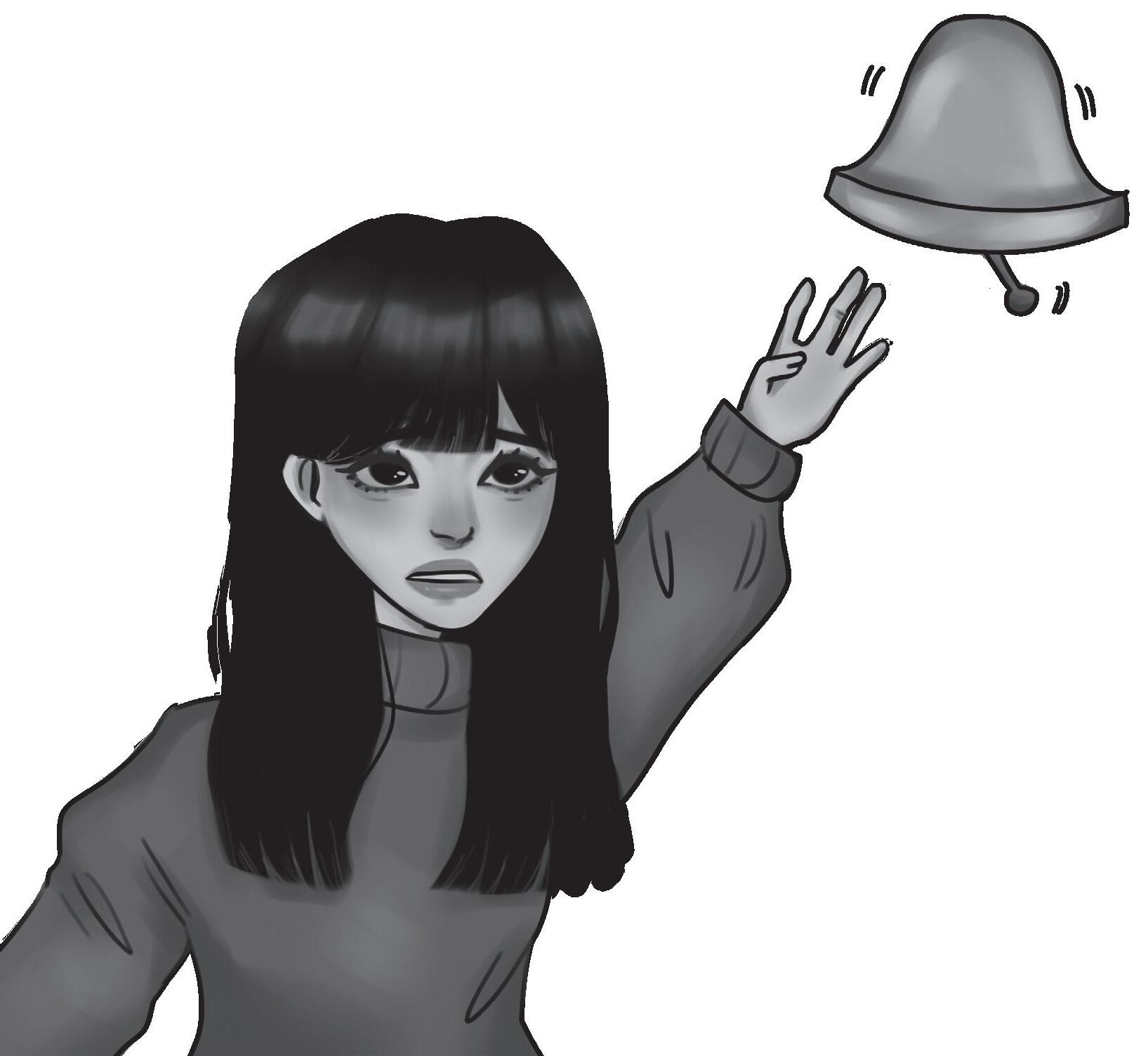
Even though it’s only been a few weeks since administrators implemented the new policy, Lupoli said he has already seen a “It is working well to get people into class on time,” Lupoli said. “I don’t have any real data to support this, but I feel like I have a lot less tardies now than I used to.
Additionally, Lupoli said his student’s ability to get to class on time has ected the class’ environment.
“I’ve been able to start class on time and get more done during the day, and I’m not constantly re-explaining directions to the students who
On the other hand, senior Sarah Bakhash said being tardy isn’t an issue unless a student is extremely late.
“I don’t think being late makes a very big impact if you’re only a few minutes tardy, because what can you even do in a few minutes?” Bakhash said. “If someone’s coming in like 15 minutes late and causing a fuss, then I do think it matters.”
Despite its success, Steingart said the policy might need changes as the school continues to test it out.
“We’ll be tweaking the system as needed, like we tweaked the Study Hall between last year and this year,” Steingart
In addition to being important to a student’s education Lupoli said punctuality is a life skill.
“Being late to a job interview means you probably won’t get the job, and being late for appointments probably means you’ll miss your appointment,” Lupoli said. “It’s important to develop a good habit in highschool of being punctual to these things, so it becomes second nature for you for the rest
over three jobs and still not being able to pay rent,” Rodriguez said.
Tess van Hulsen, a Palo Alto resident who has been to Lahaina multiple times and organized community supply donations to Maui, said the one of the best ways people can help right how is to support those working in Maui’s.
“Donating physical donations was the initial phase of supporting Maui and the survivors that had lost everything,” van Hulsen said.
“Now we must shift to thinking about how we can support Maui in the long term, and that could be donating fnancially or helping contribute through tourism.”
Holden Lee Lifestyle, Sci/Tech Editor
Alaw that will extend renter protections beyond the scope of current state law was passed by City Council at its Aug. 21 meeting.
Tee new law will increase the number of tenants eligible for eviction protections by reducing the required protection period in the city for renters from 12 months to six.
Katie Causey, a board member of the Palo Alto Renters Association, said the law closes loopholes in state law and prevents landlords from taking advantage of poorly written policies.
Assembly Bill 1482, passed in 2019 by the state, contains many renter protections, including “just cause,” which requires a landlord to have a legitimate legal reason for evicting a tenant, preventing arbitrary evictions.
But it also states a renter must be in a space for 12 months before the protections kick in and doesn’t apply to homes construct-
But Marcus Wood, the Senior Vice President of Operations at Kylix Enterprises, a local property management company, said Palo Alto’s new law is toothless.
Wood said eviction isn’t common in Palo Alto, and landlords never arbitrarily evict tenants.
“It doesn’t protect anybody anymore,” Wood said. “It’s a solution in search of a problem.”
According to Causey, just under 50% of residents in Palo Alto are renters, while around 60% of PAUSD families rent.
“A lot of people move to Palo Alto for the access to the schools,” Causey said. “And if a family faces eviction, that can be incredibly devastating.”
Yan Zhang, a parent of a Paly student, said her life is not currently impacted by the new law, since she doesn’t intend to break her family’s lease agreement but
work, said the main problem with “just cause” for landlords is evicting problematic tenants, who are increasingly hard to evict even if they have violated the lease agreement.
“One of my friend’s tenants used a knife to threaten neighbors,” Liu said. “Everybody knew about it, but since the tenant denied it, there was nothing we could do without evidence.”
Additionally, Liu said the pandemic only aggravated the problem for landlords.
“Since the pandemic, there is a law called the Eviction Moratorium, which states that landlords cannot evict tenants, even if they do not pay rent,” Liu said. “In one of my rentals in San Francisco, I haven’t collected a single penny from the tenant since 2020. I lost tens of thousands of dollars, and I still need to pay my mortgage and property taxes.”
San Francisco’s Eviction Moratorium expired on Aug. 29.
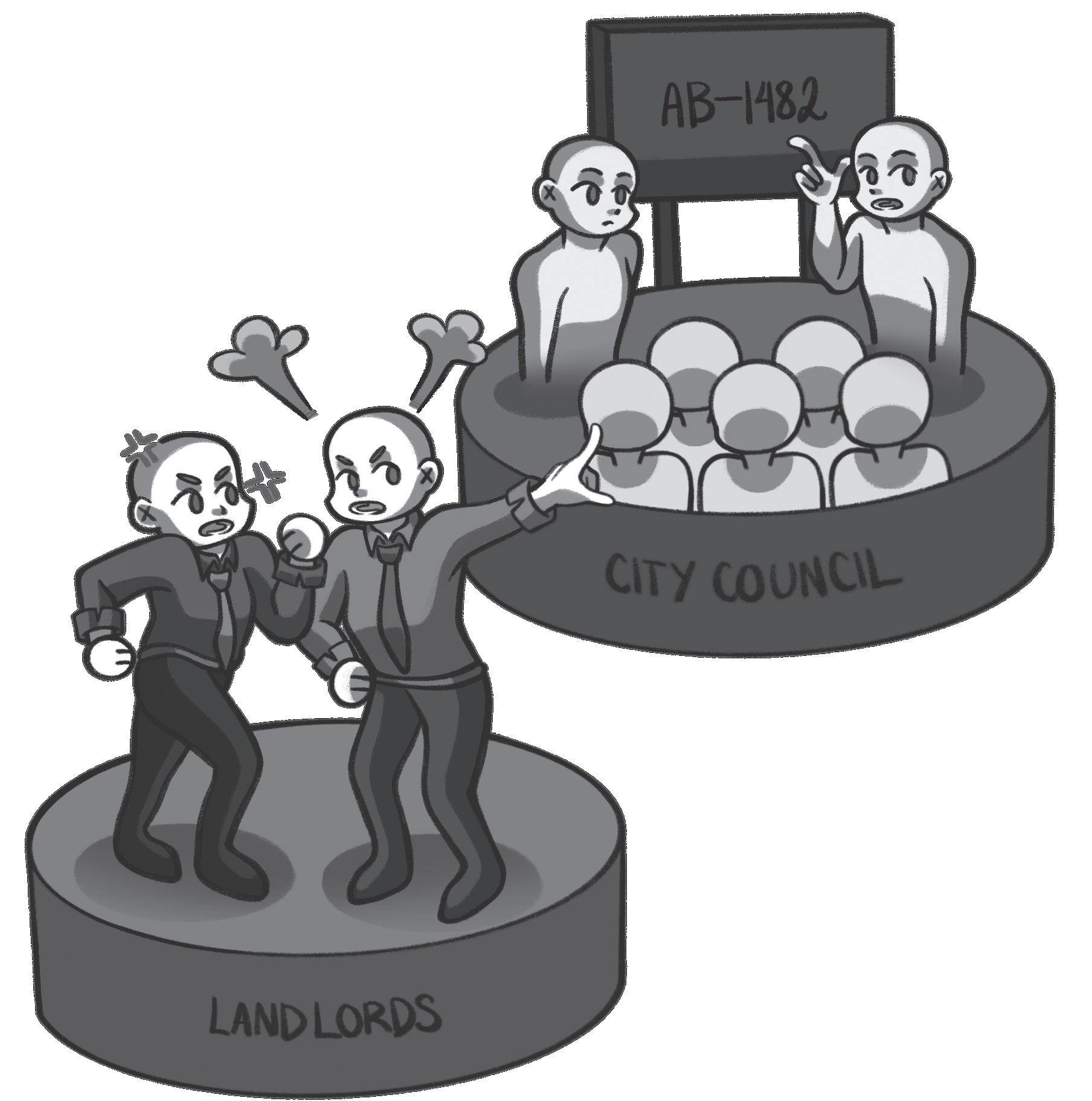
Regardless, Liu said in the long run, Palo Alto’s law is bad for both tenants and landlords, because it disincentivizes new landlords from
According to Liu, the solution to the Bay Area housing crisis is not in better tenant protection laws. In addition, Wood said, due to the lack nancial incentives, only one private developer has developed housing in Palo Alto since 1990.
“Let’s look at San Francisco, which has a very draconian rent control,” Liu said. “ Tere are 61,000 vacant units in San Francisco, because homeowners do not dare to rent them out. And as a result, San Francisco’s rent is higher than anywhere else in the Bay Area.”
But Causey said the personal cost of eviction is too great for cities not to regulate
“I’ve spent late nights looking for social workers for seniors days away from losing their home,” Causey said. “I’ve been there nd an apartment and also can’t continue to live with their abusive spouse. I’m just really glad to see the city take the issue of evictions as seriously as
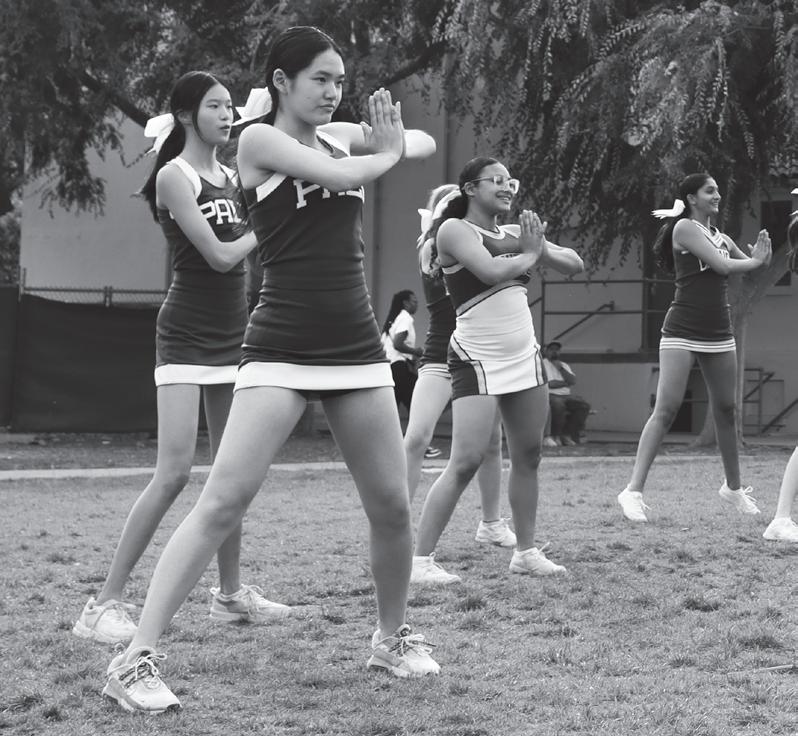
a
Te
team performs for
and
Administrators and the PTSA co-hosted the frst Parent Fair on Aug. 31 on the Quad during Back-to-School Night.
Tis new event featured food for attendees and performances by the band, cheer and choir.
PTSA Vice President of Community Activities Esther Yoo, who helped plan the Parent Fair, said the goal of the event was to foster a stronger sense of community.
“Paly is such a large school with so much to ofer, so sometimes it’s really hard to get a sense of cohesiveness,” Yoo said.
To address the issue, Yoo said the PTSA formed the Parent Fair to create an opportunity for families to connect with each other early in the school year.
“It is a wonderful opportunity to bring the parent community together and expose (them) to all that Paly has to ofer,” Yoo said.
Parent Fred Mondragon said he enjoyed the event and the performances presented by the students.
“It’s exciting to discover new people and events, so I’m curious to see more about it,” Mondragon said.
Additionally, parents were able to meet representatives from student groups and gain insights about the diferent programs available to students.
Junior Samantha Fan, a representative of Paly Speech and Debate, said she enjoyed meeting with parents to talk about her club because it gave her the opportunity to express her passion for the program as well as showcase the organization’s accolades.
Fan also said the Parent Fair is an efective way to inform parents about student extracurriculars, which they can then talk about with their children.
Fan said, “Having (events) like this, parents get an inside view of what Paly is like and all the diferent things that happen.”
Alex Isayama Staf Writer
Working from an inaccurate map, a construction crew installing underground pipes around campus accidentally cut a major power cable and water line during the frst week of school, forcing teachers and administrators to adapt on the fy.
Principal Brent Kline said the installation of these underground pipes throughout campus is meant to connect all the buildings to centralize the fre alarm system.
Tis campus has been built over the years, obviously, and this is something that’s never been done that we need to get taken care of so that it’s a more complete system,” Kline said.
Kline also said the electrical outage in the days leading up to the frst day of school had a signifcant impact on all teachers and administrators.
“We all had to readjust,” Kline said. “I know things were either rescheduled or canceled in terms of events. Tere were a lot of creative adjustments done in order to ensure that we started school on time on Wednesday morning.”
According to U.S. Government teacher Austin Davis, part of the reason the power was out on campus for so long was the difculty in getting replacement parts.
Te line itself is not something that’s easy to come by, as they had to
get it from out-of-state and install it here, so that’s why it took a couple of days for them to get the power back on,” Davis said. Davis also said the frst few days of school were especially difcult because teachers typically conduct training and preparation on the Monday and Tuesday before students come on Wednesday.
“I (wasn’t) able to complete my trainings because I usually do them at school on the teacher’s work day and I just get them done then,” Davis said.
“So now (the administration) has allocated other times during what would normally be meeting times for us to do those trainings.”
Te campus water shut-of also affected many student athletes, including sophomore Andrei Seletskiy who is on the boy’s cross country team.
“During practices, (the water shut-of ) made it signifcantly harder to train and recover properly, and we get dehydrated from the intensity as well,” Seletskiy said.
Freshman volleyball player Juliet Frick agreed.
“During volleyball practice, water is not always available, which can be difcult if you forget your water bottle or something,” Frick said. “Using restrooms aren’t always available, so that’s inconvenient.”
Additionally, for student counselors running Camp MAC, Paly’s
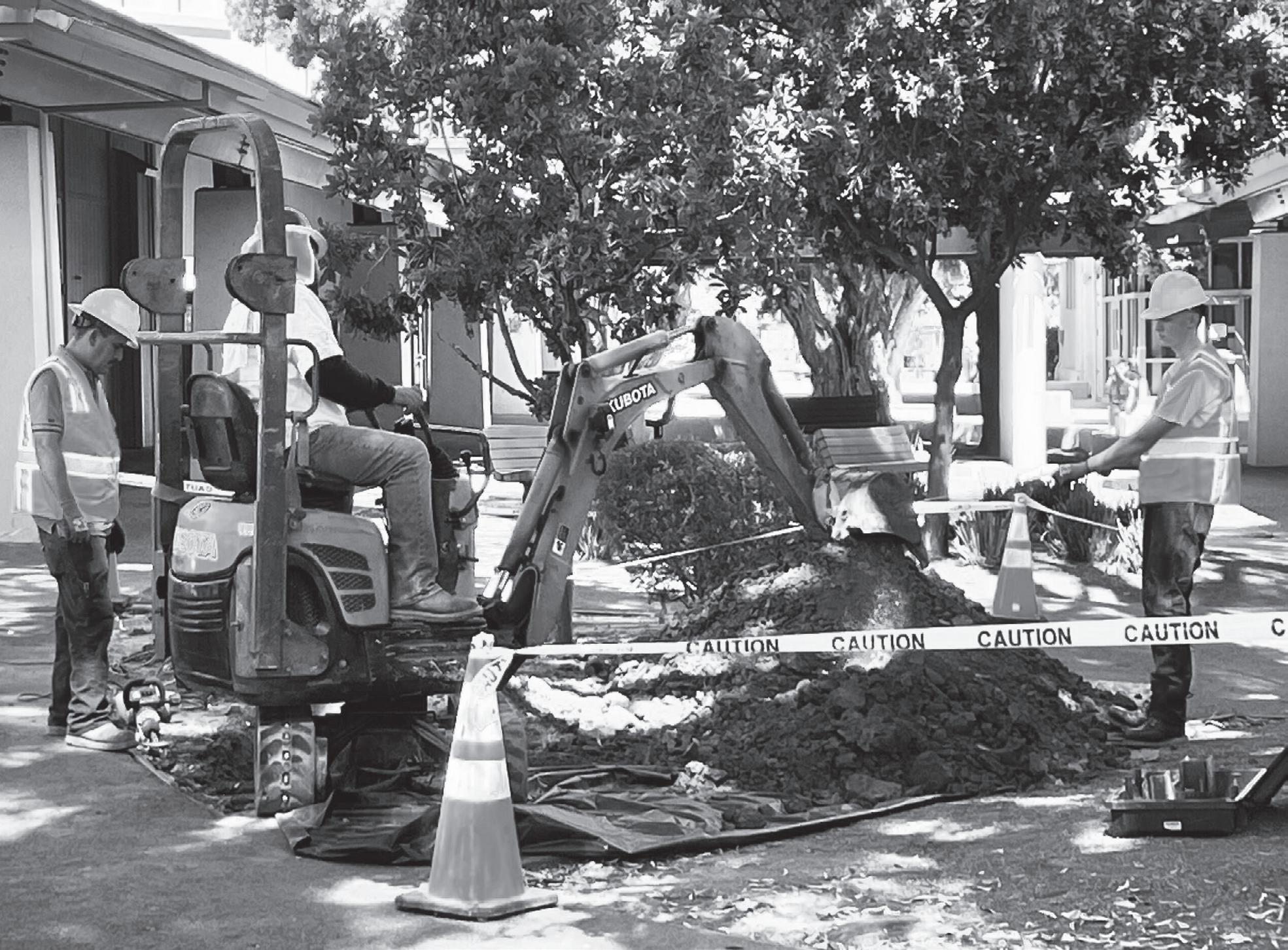
journalism camp for rising 8th and 9th graders the week before school, the lack of power caused a shift in the curriculum.
Senior and camp counselor Austin Eng said the camp leadership team was forced to adapt quickly to the change.
“In terms of scheduling, it defnitely threw us a loop,” Eng said. “Because we couldn’t use our com-
puters, it turned more into traditional summer camp activities … It was more of an of-technology bonding, like how a traditional camp would be like, and it acted more celebratory after we fnished everything.”
English teacher Lizzie DeKraai also said teachers had a hard time getting ready for the frst day of school during the unexpected power outage.
“ We were putting our classrooms together in the dark, our
for Wi-Fi were unreliable,”
said. “It was just not a functional working environment. Tose days are really when we get so much work done… so overall it was just discombobulating. Te frst couple weeks, I felt like I was just running behind, and I didn’t have everything prepared like I wanted it to be.”

When Economics teacher Grant Blackburn returned to school after COVID-19 restrictions eased, he found himself and his students in need of new footing.
“We’re all struggling to fgure out how to rebalance the way that we live our lives,” Blackburn said.
Across the nation, the return to school has seen unprecedented levels of behavioral struggles.
According to the National Criminal Justice Association, the social isolation and lack of emotional support from quarantine increased the prevalence of mental health issues in young people and hindered behavioral development, with Te National Center for Education Statistics reporting an 87% decrease in socioemotional development in public schools during the 2021-2022 school year following COVID-19.
And in 2023, EAB, an educational research institution, reported that 70% of educators have seen a rise in behavioral disruptions in the classroom.
Te American Psychological Association surveyed 9,370 teachers from all 50 states and found that one third of teachers had experienced verbal or threatening violence from students.
Critically, such violence has caused problems for teachers.
Te APA found 49% of surveyed teachers had a desire to quit or transfer jobs directly due to concerns about safety and school climate.
ates, one family engagement specialists, one school-based mental health therapist, one therapeutic special education teacher and six program aides,” Pinckney said.
Pinckney also said all new mental health and wellness associates hires are district employees and not contractors.
“When they are hired, they feel a greater sense of belonging,” Pinckney said. “In addition it could help them connect with students and families more.”
Ramos said the district is also placing renewed emphasis on Safety Care training.
“Safety Care is the method where we train staf specifcally on de-escalation tactics and strategies,” Ramos said. “It is for teachers when they might have to deal with students in their class who might engage in more frequent disruptive behavior.”
While in the past, training was more specialized to certain staf members, Ramos said the training course this past month, Understanding and Managing Behavior, was given to all.
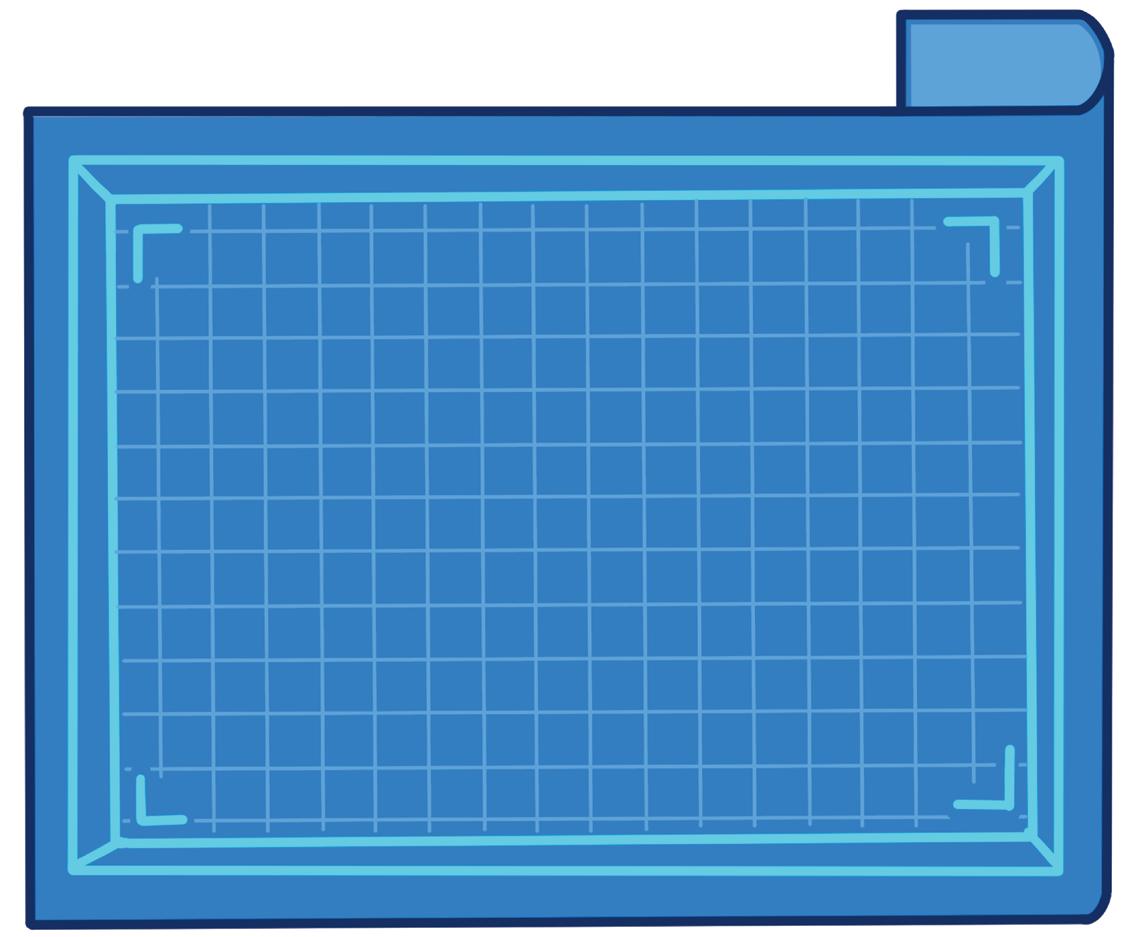
violent incidents in PAUSD during the 2021-22 school year
According to the California Department of Education’s DataQuest database, PAUSD had 20 suspensions for violent incidents with injury and 53 counts of violent incidents with no injuries in the 2021-2022 school year.
Within the district, Gunn High School and Palo Alto High School combine to make up 38 out of 73, or 52%, of violent incidents. Gunn had 12 violent incidents with injury and 16 violent incidents with no injury. Paly had one violent incident with injury and nine violent incidents with no injury.
Following a post-pandemic surge in student behavioral issues, Behavior Support Services Manager Nestor Ramos said the district is working to improve its support for staf and students.
“We have added a number of new staf to support students including 12 new Behavioral Intervention Coaches –– one for each site,” Ramos said. “We now have a total of 22 coaches in the district.”
In Superintendent Don Austin’s weekly update, Austin said the Behavioral Intervention Coaches are meant to support general and special education.
“BICs provide school personnel with behavior support, coach staf on student-specifc behavioral interventions, provide behavioral crisis support, collect data and assist staf with the implementation of behavior plans or strategies/interventions that will help support individual students or the entire classroom,” Austin wrote.
According to documents sent to Te Campanile from PAUSD Director of Fiscal Services Charen Yu, the district has invested $3,655,430.94 into behavioral support since the end of 2022.
To supplement the funding, District Public Information Offcer George Pinckney said the district has established 28 new positions for providing behavioral services and support.
“In addition to behavior intervention coaches, PAUSD has hired seven mental health and wellness associ-
“In the past we did have a smaller scale training, and it was mostly geared towards instructional assistants and education specialists,” Ramos said. “It was open to all, but the majority of the folks that were in attendance were mostly special education.”
For training this year, Austin said more than 1,300 staf members attended, including teachers, principals, custodians, food service employees, instructional assistants, bus drivers and administrators.
Moving forward, Ramos said the district will prioritize increasing communication with the community about new behavior initiatives in the coming months.
“We’re planning to organize a speaker series for parents to provide education and support,” Ramos said. “We want to make the behavioral support and knowledge more accessible to families.”
According to Palo Alto Educators Association President Teri Baldwin, Infnite Campus has also now been updated to notify teachers if a student has exhibited violence in the past.
“ Tis awareness is essential because it helps us determine if there’s a behavior plan we need to work on and continue,” Baldwin said. “We’re grateful for this change because in elementary school, it’s a bit simpler with one teacher per student, but in secondary education with multiple teachers, it’s crucial to ensure all teachers are aware.”
Baldwin also said this change is not intended to isolate students or label them negatively.
“It’s really about being aware, so we can support all students, especially those showing these propensities,” Baldwin said. “ Tis proactive approach allows us to step in and hopefully prevent any incidents before they occur.”
And Baldwin said teachers are thankful for this change.
“It just helps them be more prepared for teaching. And it’s in one place, it’s easier to fnd.”

Nguyen also said the fags in Infnite Campus will help teachers more efectively teach students.
“I think the Infnite Campus change is defnitely a good move in the right direction,” Nguyen said. “ Te better we know our students, the better we know how to meet their needs. And if sometimes, they are prone to act a certain way, then we can be more prepared in helping prevent them from acting that way.”
When behavioral situations arise on district sites, there are various diferent levels of threat assessments, according to Safety, Security and Disaster Preparedness Manager Mike Jacobs.
“We have transient threats, which are the types of threats that may have been made in the heat of an argument,” Jacobs said. “It’s not really a risk, whereas a substantive threat is something that is more long term. A serious threat would be something physical without a weapon. A very serious substantive threat would be something with a weapon like a frearm or a knife.”
Jacobs said when situations occur, each site has a threat assessment team that will sit down and evaluate the situation.
“We utilize the Virginia Model, which was US Secret Service,” Jacobs said. “(Te model ciplinary group of individuals: administrators, classifed staf, mental wellness professionals like myself.”
In addition, in the yearly armed assailant Assembly Bill 1747, Jacobs said there is an placed on behavioral training.
“One of the videos that I use in our training created by the Sandy Hook Promise, and the student dealing with bullying was showing warning signs throughout the entire video,” were missed because there were so many other school.”
Tough staf members across the district district for making safety and dealing with priority, many say they want to see more done.
Meb Steiner, president of the Palo Alto fornia School Employees Association, the employees, said the inclusion of more behaviorists created a positive impact on the existing sta
“Our behavior team was very happy that be more of them, because they were stretched said.
However, Blackburn said no one has fully BICs to teachers.
“I don’t understand how a behavior coach system I’ve operated under for 23 years,” Blackburn framework I’m currently under, I’m not thinking that kid needs to go to a behavior coach.’” And Steiner said she is worried about the hire and retain BICs.
“ Tere’s still a lot of questions,” Steiner to continue to be ironed out, added and worked In regards to those future plans, Steiner start is more comprehensive training.
“Another big piece of staf safety is training really well to know how to prevent a situation Steiner said.
While district ofcials say they addressed Safety-Care training, Blackburn said the training as intended.
“ Te topic was so important,” Blackburn was that the training we got was horrible. All erPoint slides. Tere was very little interaction
Daniel Nguyen, math teacher and Paly’s Alto Educator Association, agrees and said specifc training.
“It was nice that the district recognized needed. I think we still need more training,” want more specifc training, like if this happens, A, B or C. Everyone would beneft with a
Tough teachers are typically on the receiving behavioral aggression, students in the classroom also afected by violent incidents.
Senior Sofa Rosen-Syrrist said she can recall multiple instances of witnessing such behavior.
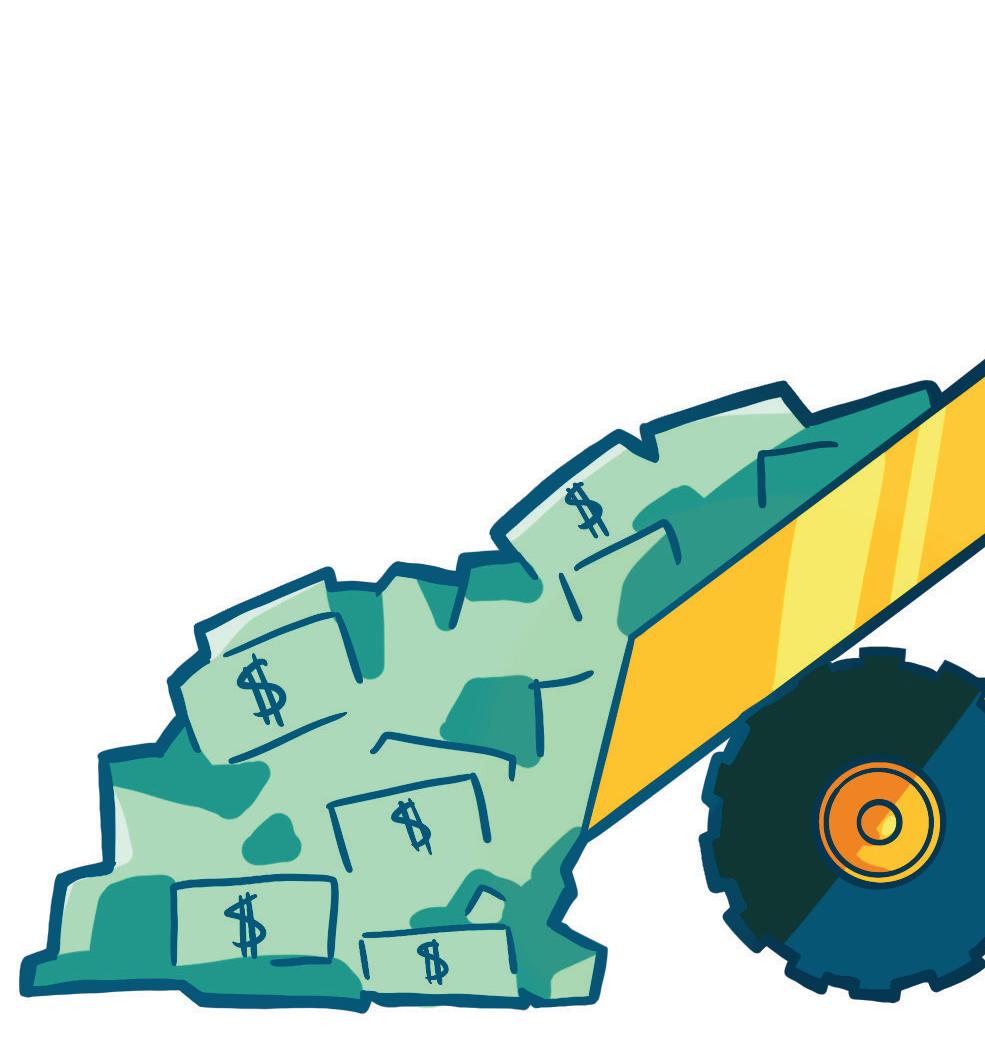

was developed by the model involves) a multidisadministrators, certifcated staf, professionals and physical safety
assailant training required by additional emphasis training is a video that was the video shows how a diferent behavioral video,” Jacobs said. “And they other things going on in
district say they applaud the violent students a done. chapter of the Caliunion for classifed behaviorists has already staf that there was going to stretched very thin,” Steiner fully explained the role of coach would operate in the Blackburn said. “In the thinking to myself, ‘Oh, the district’s ability to said. “ Tings are going worked on.” said the frst place to training our staf really, situation from escalating,” addressed this with new training wasn’t as useful Blackburn said. “ Te problem All they did was Powinteraction with the crowd.”
Paly’s site rep for the Palo said teachers want more that some training was training,” he said. “Teachers happens, consider doing little more depth.”
receiving end of classroom are
“One time, a classmate was arguing with a substitute teacher and it angered (the substitute),” Rosen-Syrrist said. “It was enough to the point where the (substitute) teacher put the student in a closet and locked it for a long time.”
Only 9 years old at the time, Rosen-Syrrist said she felt frightened.
“I felt really terrible for the student,” Rosen-Syrrist said. “More than anything, it was scary, and I honestly remember everyone feeling like that.”
Despite the severity of the situation, Rosen-Syrrist said she thinks this incident was resolved appropriately.
“From what I know, the teacher was not allowed to substitute at (my school) ever again,” Rosen-Syrrist said.
While unaware of the new plans being put in place by the district when asked about them by a Campanile reporter, RosenSyrrist said teachers need to be better equipped to deal with similar situations.
“ Tere should be certain courses that a teacher is required to go through, especially if you are working with younger students,” Rosen-Syrrist said.
Ramos said the district hopes to closely monitor the number of incidents this year compared to previous years in order to measure the efcacy of its new initiatives.
“We’re going to be keeping a close eye on any trends or patterns in overall occurrences and see if through the eforts and this investment, we (are) able to scale down the number of these occurrences,” he said.
Ramos also said analyzing this data could aid in revealing contributing factors to aggressive behavior.
“Diving into the data to look at patterns (can) maybe lead us to answers,” Ramos said. “It’s not only behavior. Tere is also a mental health piece. We can look into the impact of (that) and all other variables.”
Clinical psychologist Judy Smith said this is an important step to help the district gain a larger understanding of what drives such types of behavior.
“Few kids constantly lash out unless there is something happening in their personal lives where someone lashes out at them. Tey’ve been taught aggressive behavior,” Smith said. “Also feeling depersonalized, like they’re not an important part of the school system, feeling weak, as though they don’t have value.”
Smith said regardless of student behavior and contributing circumstances, intervention is crucial.
“(Sometimes) schools simply transfer students who exhibit these behaviors to other schools, which is ridiculous and does not solve anything,” Smith said. “ Tese students need intervention and need counseling.”
Steiner said this counseling is not only essential in addressing violent student behavior, but also for preparing students for their lives beyond school.
“ Tere’s the classic ABCs, which is antecedent, behavior and consequence,” Steiner said. “I like to work on the antecedents. I want to set a kid up so that they are successful.”
Steiner said standardizing expectations for students will assist the process of addressing these behaviors.
“ Te expectation of behavior, what is appropriate, should be the same for all students,” Steiner said. “A diagnosis (is) not an excuse to act badly or not meet the expectations, whether it be academic or behavioral, but the way you go about achieving that is going to be diferent.”

And Steiner said the ongoing conversation around behavior is vital in making positive strides in the district.
“Everyone has to be on the same page, otherwise messages are inconsistent,” Steiner said. “(Tis conversation) was the start of the idea that we’re all doing this as a community. We need to address this problem as a community.”
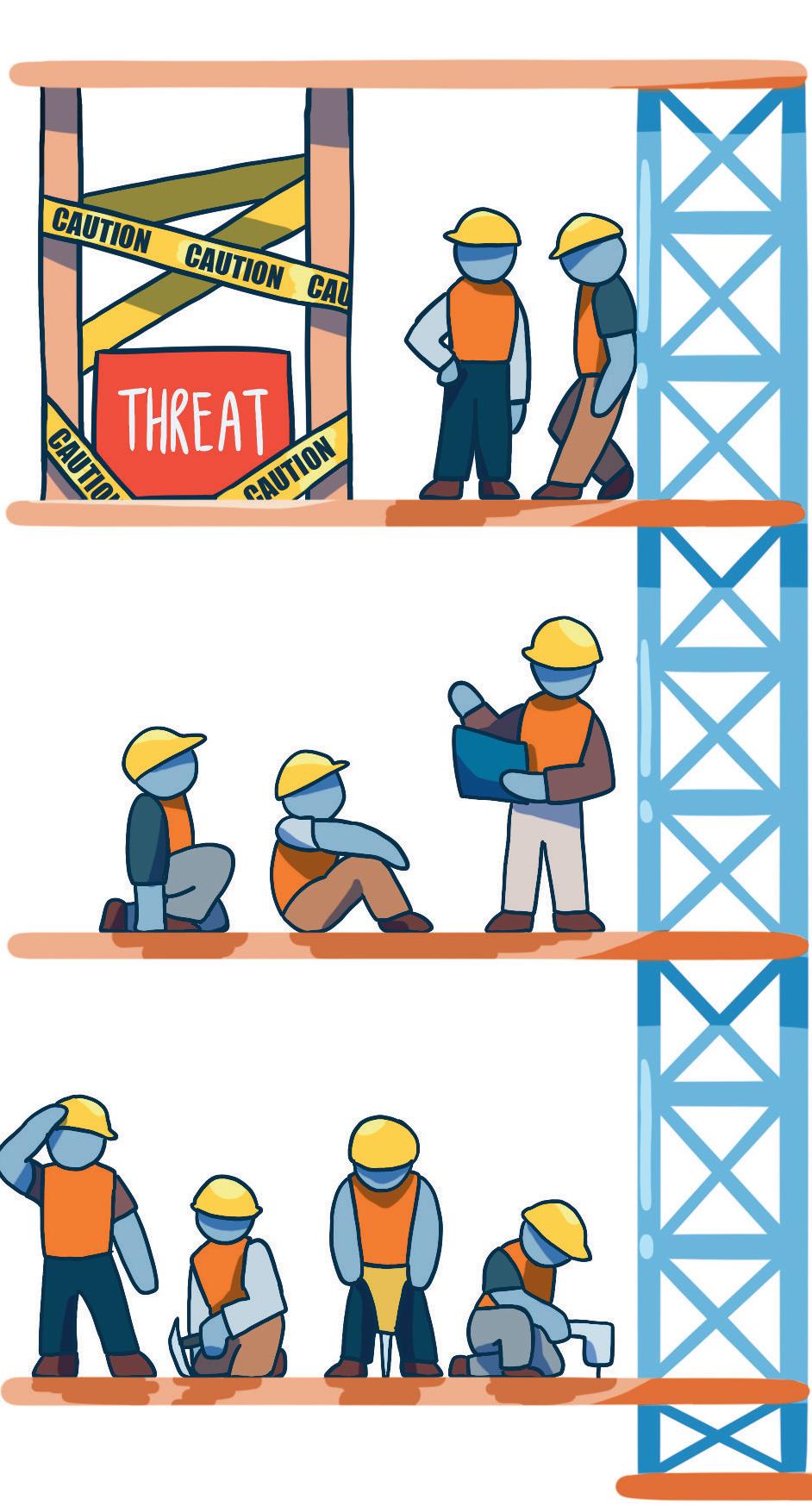
DISTRICT STAFF RECEIVED TRAINING IN BEHAVIORAL DE-ESCALATION TACTICS. STAFF CAN ALSO NOW SEE IF STUDENTS HAVE EXHIBITED VIOLENCE IN THE PAST
 Alec Bonnard Lifestyle, Sci/Tech Editor
Alec Bonnard Lifestyle, Sci/Tech Editor
Despite having taken the same carbon footprint evaluation in my science classes for the past four years, I’m still shocked every time I discover that if everyone lived like me, we would need 3.5 Earths to sustain the world. Tough my classmates and I may consider ourselves ecologically friendly people — we are enrolled in AP Environmental Science, after all — we all use between 2.5-6.5 Earths each.
Te overconsumption of resources in America has brought stark ecological consequences, and Palo Alto is no exception.
But no matter how passionate anyone is about conserving the environment, the reality is that on an individual scale, there is little they can do about it. Even avid environmentalists struggle to live green because of the way our day-to-day functions amplify our carbon footprint.
Systemic constraints are the reason why we live in a way that’s so harmful to the Earth. Our environmentally-friendly eforts are perpetually limited by infuenced lawmakers, a lack of eco-friendly infrastructure and insuffcient instruction given to citizens about how to live sustainably.
From 2000-2016, climate lobbyists spent an estimated $2 billion swaying legislative decisions on environmental issues. Next year, the $10.1 billion budget of the Environmental Protection Agency will be adjusted for infation, half of its allocated budget in 1980.
In the 2024 fscal year, the Republican interior-environment spending bill plans to drastically cut money meant for diesel emission reduction grants and clean water and wastewater management projects, to name a few. Te result of decades of policy is that current legislation benefts climate change contributors more than climate change reducers.
Additionally, the extension of cities through low-density neighborhoods — a result of rapid urban growth and industrialization, is seen throughout the U.S. Tis urban sprawl limits public transportation and causes inadequate walkability in cities, exemplifying the little attention our lawmakers pay to the climate. As we see in Palo Alto, such shortcomings practically force a dependence on cars.
Misconceptions about staying green can contribute to non-eco-friendly behavior too. Take the three arrows on plastic products for example. Tese don’t always indicate they are recyclable, but instead refer to a scale of recyclability (not that it would matter, since at Paly, many people do not recycle properly anyway).
Even when people know how to live green, the lifestyle can be expensive. Fast fashion

shopping, for example, is cheaper than buying clothes from (more) environmentally-friendly brands. Similarly, electric cars — invaluable contributors to an eco-friendly lifestyle — are too expensive for most people.
Despite the fundamental environmental limitations ingrained in our society, not all responsibility is gone.
We mustn’t let society’s cultural norms and psychological barriers degrade our environmental consciousness.
In spite of being widely considered a green leader relative to other towns in the state or even country, Palo Alto has cultural practices
When I walked into the Guidance Center seeking help for the frst time as a freshman, I was greeted with a welcome sign and an empty desk. I scanned the room in confusion, and a boy on my right nodded towards the purple Google form lighting up a computer screen.
I went over, flled out my request to talk with my counselor, and left looking forward to the advice I would receive to prepare myself for the upcoming school year. Tat was two years ago. I never received a date or appointment to meet with my counselor. In fact, I heard nothing but silence from the Guidance Department for over a year.
When I reached out again toward the end of my sophomore year, this time by directly emailing my counselor, all I got was an auto-reply email. Te email told me to set up an appointment through the Google Form in the Guidance Center.
Frustrated, I realized I was running in circles. I know I am not alone in facing this issue: many students experience delays when trying to meet with their counselors. Tis issue can be attributed to a lack of communication as well as infexibility.
As a result, many students feel the process of booking an appointment with their counselor is too stressful or daunting, often leaving students less motivated and unlikely to reach out and ask for help when they need it.
Students look to their counselors for guidance when making schedule changes, for example.
Tese schedule changes are critical when it comes to grades, mental health and college ap-
plications, so it is important to have access to a guidance counselor who can provide answers to personal questions.
However, when a student’s guidance counselor is not present or is unable to provide support, students are often left to fgure out the complex structure of academic pathways and their own academic careers on their own.
Tis could lead students down a pathway that isn’t suited for them because while students may have access to the course catalog and upperclassmen’s reviews of certain classes, students don’t necessarily know which classes they should drop, keep or add, often increasing stress and anxiety.
While the administration encourages students to use the Tree-Tiered Guidance System and rely on their Teacher Advisor frst, the system is insufcient because advisors often don’t have the information students need.
To better this syste, the Guidance Department should clarify the specifc roles of Advisors and what information they have to students through a more outlined and organized Tree Tier System.
Allowing more transparency through clarity of the diferent roles divided between Advisors and counselors would help students make educated decisions.
Te Google Form appointment scheduling system is also insufcient because it fails to acknowledge students are the ones who need to ask for these appointments. To make this appointment process more streamlined for students, the Guidance Department should make
and norms that continue to prioritize convenience and consumption over eco-friendliness.
Amid the depressing news we hear on climate change, whether it be wildfres in Maui or record fooding in Rwanda, it’s easy to feel hopeless or overwhelmed by the sheer magnitude of environmental issues facing us. When we zoom in on our individual impact, it’s easy to believe that our eforts won’t make a diference.
While we can’t solve the climate crisis, we can mitigate our footprint. As students, we have little control over the electrifcation of our homes, but we do have control over limit-
ing the amount of paper we print, single-use plastics we purchase, clothes we throw away instead of donate and food we waste. Te difculty and efectiveness of the eforts an individual can make vary. Going vegan or limiting fying might not be easy depending on the person, but both yield tremendous environmental efects.
Living like an eco-warrior takes more effort than living in blissful ignorance of our environmental dilemma. Still, it’s possible to live a life that is convenient to both us and our Earth in order to reasonably lower our carbon emissions.

a master calendar using Calendly, much like the Paly College and Career Center counselors do, with blocked-out dates that show when counselors aren’t available.
Additionally, the calendar should include a form where students post their availability.
Tis way, if random openings free up, guidance counselors can meet with students sooner rather than later.
I urge Guidance to understand how important having accessible counselors is to
students while at Paly and after; it directly afects their academic and personal lives physically, emotionally and mentally. Guidance counselors and administrators did not respond to interview requests for this story.

 Gavin Lin Staf Writer
Gavin Lin Staf Writer
Summers used to be carefree. I have golden memories of attending summer camps, laughing entire mornings away with friends, staying up late at sleepovers and having weeks on end with nothing but relaxation on my mind.
But when I look back at this summer, it was nothing like it was a couple years ago.
Tis summer, I dove into an of-campus course and experienced countless hours of busy work, and I’m not the only one.
Other students have told me about their massive workloads over the summer: taking summer courses, counseling for summer camps and even taking internships.
Many high school students are overworked during the summer, a huge shift from the easygoing summers in middle school.
Te root cause of this problem is students can’t take all of the classes they want to take during the school year. For example, I tried to squeeze AP Spanish Language and Culture into my schedule this year, but I couldn’t because I was already taking seven other classes.
Along with many other students, senior David Tomz said he had to choose between two passions in his freshman year.
“I had to choose between music and visual art pathways,” Tomz said. “I chose to switch to art, so I lost out (on band).Tere are a lot of other fun classes that seem really interesting that I don’t take just because I feel like I need to take these core classes.”
Sophomore Marcello Attardi said he had a similar experience, and had to choose one class over another because of graduation requirements mandated by California and PAUSD.
“I’ve always wanted to take theater, but I can’t ft that into my schedule because I have so many other (classes),” Attardi said.
Senior Johann Garcia said he had to take Economics over the summer because of graduation requirements.
Tough UCs only require three years of history classes, PAUSD requires four including a semester of Economics.
“I knew I would want fve classes in senior year, but if (Economics) wasn’t a requirement, I probably wouldn’t have taken it,” Garcia said.
However, this problem isn’t limited to the number of classes students can take.
Another scheduling problem that creates stressful summers is that many popular classes are often full.
Junior Sophia Dong said many students like her are prevented from taking classes they want year after year.
“I’ve been really wanting to take Advanced Placement Computer Science A, but obviously there are a lot of people who were taking that,” Dong said.
Another problem that encourages summer stress is the district placing frm restrictions on laning up in a class, forcing students to often sufer through classes they are overqualifed for.
Attardi, who said he is fuent in French, tried to take AP French last year, but was shot down by restrictions.
“ Tey wouldn’t let me move up because freshmen aren’t allowed to take AP French,” Attardi said.
Tis causes students to overwork themselves over the summer so that they can take challenging classes.
But the seven-class schedule, problems with full classes and heavy graduation requirements won’t just go away. Tankfully, there are solutions to this problem.
First, Paly needs to hire more teachers. Most students meticulously plan their high school course load. However, when course schedules come out, many of these students’ plans are shattered.
Additionally, a shortage of teachers has led to some popular classes, such as AP CSA, being full, meaning that no more students can transfer into the class.
If Paly hired more teachers — though it could be a difcult and expensive task — more students would be able to take the classes that they need to take.
Also, PAUSD should loosen its restrictions on laning up.
For example, freshmen fuent in French should be allowed to take AP French.
Students that aren’t learning anything in math class should be allowed to skip a year.
Another option could be to let students take an eighth Paly course after school or during the weekend, giving us the freedom to follow our passions instead of being confned to our required classes.
Tough 0 period Physical Education sounds like it allows students to take an extra class, the district does not allow students to take that eighth class.
Finally, PAUSD and the State need to loosen graduation requirements.
Some classes, such as Living Skills, take up valuable class slots.
Students face many obstacles that prevent us from following our passions including the seven class limit, full classes and the problems with lane changes.
But there are solutions.
By loosening graduation requirements and making lane changes easier, PAUSD could provide us with more opportunities instead of taking them away.

You’re about to walk into your history class when your teacher stops you and asks for a crisp 20 dollar bill to enter the room. But why would you pay your teacher?
Haven’t your parents already been subjected to property taxes, which indirectly goes towards your teacher’s paycheck?
Now apply this same logic to varsity sports games.
Our school has adequate funding for its athletics program. We have the highest standard of facilities and an annual athletics budget just shy of a million dollars.
Parents pay for their children’s public education in the form of taxes, which then help pay for sports and the (seemingly unending) construction of new buildings.
So why do we still pay student fees to view school sporting events? We shouldn't have to.
Te average resident in California pays just under $15,000 per year from taxes for the school.
By revising the athletic budget to allow free student admission to school sports, It seems like the issue could easily be solved.
It’s not fair to ask for student money at every game, and it's even more unfair that some sports ofer viewers a gold throne while others, a measly lawn chair.
If the average attendance at a football game is 1,000 people, the athletic department seemingly makes $7,000 just by charging at the gate. And that is from a single game.
PAUSD allocates $170,000 per year for transportation of athletics teams, referees and league fees.
In addition, all coaches are paid from the district budget, and materials and supplies for teams are paid for in the current plan too.
Essentially, it seems that most teams don’t need to fund themselves.
Tink of it like this: for ASB events such as Homecoming or Prom, paying for tickets makes sense, since our student government is truly student-funded and does not have a district budget.
But rather than criticize, my goal here is to applaud the district for its funding eforts and to tell sports that feel the need to fund themselves that they don’t need to.
Tey have a strong support system in place that is lacking some sort of communication.
I understand that we might have a Athletic Boosters group that raises money to support their children in sports.
But in light of this and other income our athletic program has, why are students still paying entry fees.
Tough it may be a tough pill to swallow, the district and the athletic department need to also recognize the importance of this issue.
On Oct. 30, when the Athletic Funding Committee meets, I urge them to fnd room in their budget to get rid of athletic entry fees for students.

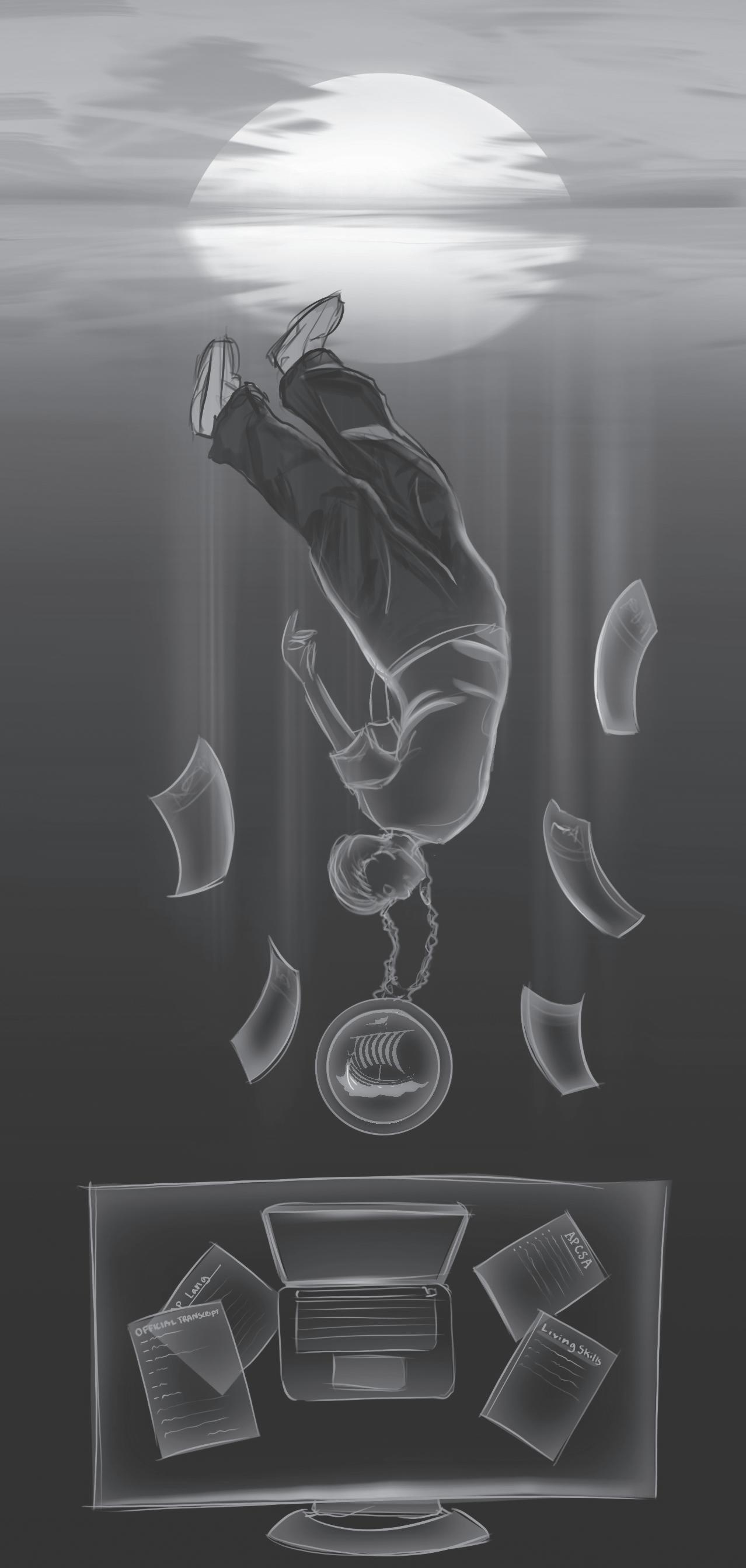

At some point in your life, the education system has made you learn about history.
“Look at this person,” your teacher probably said. “ Teir actions inspired massive revolutions in certain aspects of our history. Also, they were racist, sexist, classist and acted on all those beliefs.”
Many of you probably then concluded that impressive as these people were, people from ye olden days were massive jerks.
History has countless depictions of extremism, bigotry and genocide.
Te atrocities committed throughout humanity show that perhaps the pessimistic philosophers Hobbes and Locke were right –– humans are cruel and brutish creatures.
Even the most highlyrevered people are not without their faults.
Take Martin Luther King Jr., for example. Peace-loving, equality preaching and radical for his time, King was an essential proponent behind the Civil Rights movement.
He was also quite sexist by today's standards.
In fact, infuential civil rights leader Ella Baker left a leadership organization run by King because he only agreed she could join on the condition that she receive no pay and a temporary title.
Despite all her good work, King never allowed Baker to take a permanent role in the organization.
When we look through history, we are often confronted with facts like these that seem contradictory at frst glance.
How does it make sense for equality-loving King to be sexist?
One way to take a look at these discrepancies is to understand that no one is without their faults, and some people have greater faults than others.
But this interpretation — while somewhat accurate — is also missing some crucial pieces of information. Te best way to analyze historical
fgures is to see them through the lens of their time period: looking at beliefs and behaviors that were socially accepted and widely prevalent when they were alive.
Peering through the lens of a liberal Californian in the 21st century, it seems ludicrous that King preached equality for some but not all.
After all, if the race you’re born into does not determine your worth, why would your sex?
Te answer lies in the way history is often framed.
Presentism, the act of evaluating a past belief or action based on the beliefs of the present, is becoming increasingly common in schools, reframing many historical fgures in almost an exclusively negative light.
Evaluating Martin Luther King Jr. and other historical fgures with the morals of the present day omits something important: context.
Brushing people of as “bad” or “fawed” ignores one of history’s major questions: Why do people act the way they do? Te answer lies in the time frame. King was born in the 1900s, in a time period where sexism was normalized. It is possible he was never exposed to more modern viewpoints regarding gender equality. But even after considering context, you may still decide King is not a fgure to look up to.
After all, he challenged fundamental beliefs on race. Why couldn’t he challenge beliefs on sex?
And that is a perfectly fair interpretation. Having a justifcation behind an action or belief does not change the morality of the belief, and it can be argued it does not change the morality of the person either.
But I believe it is important to keep the idea of presentism in mind.
Acknowledging people’s motivations, regardless of how fawed they are, is always important when it comes to understanding history, and judging people from the past on today’s standards gives us an inaccurate view of who they really are.

The district invested $3.6 million into behavioral services in May following incidents of student violence in the last few years. Matching a national trend of increasing student violence in public schools, PAUSD reported a total of 107 suspensions — 20 of which were for violent incidents that resulted in injury to at least one party involved — in the 2021-2022 school year.
Additionally, multiple interpersonal altercations at JLS and Paly last school year have prompted increased community attention and district-wide policy changes.
To mitigate these issues, the district invested in Behavior Intervention Coaches — who are intended to deescalate situations by intervening when a situation arises — behavioral supports, procare therapy and behavior specialists. Tis plan, which is being phased in this school year, also includes presentations on dealing with violent students for district staf
However, based teacher comments to Te Campanile, we recommend the district place an emphasis on increased teacher response training rather than strictly hiring interventionists. Teachers we talked to said they would prefer direct training in dealing with violent students rather than having to rely on presentations where someone reads slides to them.
While BICs have the potential to teach staf to incorporate behavioral strategies in their classes, their function is primarily to de-escalate crisis situations. However, Te Campanile questions whether BICs will be immediately in moments of crisis which are unpredictable and often chaotic.
Tough BICs and other interventionists serve an important function of de-escalation in each school, Te Campanile thinks it is equally, if not more, important that teachers get ample training and are able to de-escalate situations themselves without putting them or their students at risk.
Additionally, according to interviews conducted by Te Campanile, teachers said the training implemented so far has been largely unhelpful and redundant. Tese same teachers, though, said improved, efectivve training on both response and preemptive measures would help them feel more safe.
While sizable changes are yet to be made to better equip teachers with situational training, Te Campanile praises the district for its investment in taking a step forward toward a lower student violence rate.
Tough Paly already has a lower rate of student disruption, violence and suspensions than both Santa Clara County and the nation, it is imperative we make it a priority to eliminate the risk of harm to our teachers and to our student body.
As such, we urge PAUSD to prioritize any future investments in more efective tearcher training and prioritize that as opposed to investing in new specialists.










News/Opinion
Sports
Writers
To increase collaboration time so teachers can review student academic progress and discuss curriculum improvements, PAUSD has adopted a new late-start schedule for six Mondays throughout the year. At Paly, classes will begin at 10:15 a.m on these days, all seven periods will meet, and they will be 35 minutes long.
Te Campanile thinks this schedule, with the additional hour of time in the morning for more sleep for students and productive collaboration time for teachers, could beneft everyone.
Principal Brent Kline told Te Campanile the main objective of the late start days is to help teachers align their teaching goals and assess their students on a monthly basis. And while their teachers are working, students can engage in a gradual sleep reset by easing into the rest of the week with the late start.
Te Campanile also views the shorter class periods on these days as a welcome departure from the routine of ambiguous 45-minute periods, which students fnd too short to fully focus on a lesson or test but also too long for a quick check-in.
Although the district’s proposal of the new schedule initially appears to be a good idea, a closer look shows its execution and how it might play could have several downsides. Te district does not seem to prioritize student interest or even the families of younger elementary and middle schoolers with this schedule.
Tere are many high school students who have sports practice, zero period or use the library in the mornings before school. Te new schedule provides an awkward window of time in between practice or classes for these students. Meanwhile, parents of younger children will have to fnd new childcare arrangements or daycare options if their young children won’t be supervised
Tirty-fve minutes is a happy medium where students can use the time to meet with peers or catch up on work for the upcoming, longer block periods.
on school campus until much later in the morning.
Tere are also various unanswered questions stemming from the district’s lack of transparency and communication about the purpose of these days. Tere was no school-wide announcement about the schedule change last year and most students remain unaware of the details. Teri Baldwin, the president of Te Palo Alto Educators Association told Te Campanile that PAEA members were surprised by the number of late start Mondays in the schedule and teachers did not have a say in the deciding the schedule.
Tis has led to a swirl of misinformation and confusion about how late-start Mondays fulfll state-mandated instructional minutes and what the deeper purpose behind the staf development time will be. Even many
teachers whom Te Campanile spoke to said they didn’t know until recently what they would be doing on these days.
Te Campanile urges the district to develop a system to track the efectiveness of these late-start days, especially with input from the staf, to determine the true validity of this additional collaboration time. For future changes, we’d like to see administrators communicate more clearly and quickly to staf and students at each school about the whens and whys of schedule change.
Involving groups like the Bell Schedule Committee when making these adjustments would help increase overall satisfaction with other schedule changes too. If the district is going to have a Bell Schedule Committee, why was it not consulted on this change?
While district ofcials say they have come up with a new schedule that supports the needs of teachers and students, they should continue to consider the subsequent consequences any change to future schedules bring to the student body, both in terms of the way they are announced and carried out.
Adviser Rodney Satterthwaite
Letters to the Editors: Email all letters to editors to theeds24@googlegroups.com. Te Campanile prints letters on a space-available basis. We reserve the right to edit submissions. Te Campanile only prints signed letters. Advertisements: Advertisements with Te Campanile are printed with signed contracts. For more information regarding advertisements or sponsors in Te Campanile and their size options and prices, please contact Te Campanile Business Managers by email at campanile.ads@gmail.com.
Note: It is the policy of Te Campanile to refrain from printing articles that misrepresent or alienate specifc individuals within the Palo Alto community. Te Campanile would like to thank the PTSA for supporting the mailing of our newspaper.
Our Vision Statement:
Te Campanile has upheld the highest standard of student journalism for the last century by engaging the community through various mediums of storytelling. Our coverage of news, culture and athletics aims to represent the diverse perspectives of our student body.

factors that infuence these styles, including culture, sports and the environment.
Vetter said his individual, androgynous style takes inspiration from 1970s rockstar David Bowie.
t the beginning of every school year, many new students walk into classes, scanning the room for anyone they might know or want to know. Clothing and appearance can infurst impressions. At Paly, like at most schools, students have a story intertwined in all that thread. e Journal of Experimental Social Psychology, the term “enclothed cognition” illustrates the psychological impacts that clothes have on both people. ects human cognition, the process of acquiring an understanding through thought In simpler terms, what people uence how they feel and think. For example, wearing a suit can make someone feel more formal and more confdent.
Regardless of how clothing makes a person feel, sophomore Kae Huang said a person’s clothing also sends a message to others since it’s one of the most important factors in regards to
“Style is important because that’s how people see you rst, and it’s your way of expressing yourself,” Huang said. “It’s not that easy to talk to everyone, so style is (how you make) a good frst
Senior Kyle Vetter said ects someone’s personality and can tell a story of who they are to others. While styles are about the individual, there are many
“He was very big into counterculture, and by wearing similar styles to his, I feel a lot more connected to that idea,” Vetter said. “Aside from our personal enjoyment, (style) is also indicative of our values and beliefs.”
Vetter said many students who express themselves through clothing fnd the majority of their clothing through thrifting.
However, some students, such as freshman Maggie Crady, take it a step further and upcycle thrifted clothes, creatively reusing materials to give it new use.
“I don’t buy clothes other than thrifting and sewing my own clothes,” Crady said. “While I don’t usually (sew) full articles of clothing, I’ll usually upcycle or crop them.”
Huang said he shares a similar passion, and said he enjoyed making many of his outfts.
“I’ve made bags, and I’ve combined pants and added unique pockets and designs, too,” Huang said.
At the end of the day, no matter where students get their out choose to appear, those like senior and cross country runner Allie Difede styles that make them feel self-assured. Difede said her outf clothing articles that give her confdence.
“My style is a mix of ‘90s fashion and early 2000s as well as current fashion trends,” Difede said. “ Tese out are important to me because it makes me more confdent in myself, and having confdence in yourself helps you in other aspects of your life.”
Sophomore Stefan Sochacki said confdence and comfort are common themes in students’ diverse styles. He also said some might describe his style as ‘beach-boy preppy.’ Sochacki wears fip fops as often as he can, and while some might think it goes against social norms and fashion, Sochacki said he doesn’t care how others label his style. He wears what he feels good in.
“I dress up in what feels most comfortable to me and what I think looks good,” Sochacki said. “I don’t care what people think about me. I’m just wearing what I want to wear.”
Whether people are dressing for themselves or others, frst impressions are made.
“Everything has a meaning behind it, and it has a way of expressing yourself,” Huang said. “Wear what you want to wear, and as long as you’re happy with what you wear, that’s all that matters.”

Bright pinks and brooding black hues blur throughout the cluster of people in the movie theater lobby. While the lines at the concession stands seem familiar, the bizarre hot pink and dark black clothing choices many of the movie-goers wear are not.
However, the jarring contrast is welcoming and expected. Te rise of the pop culture statement “Barbenheimer,” a combination of the names of the blockbusters “Barbie” and “Oppenheimer,” used to describe their same-day release, shook the movie industry when both movies hit theaters on July 21. According to “Insider,” the “#Barbenheimer” hashtag has over 100 million views on TikTok.
Tousands of people posted their cinema experience online and thousands more jumped onto the trend of watching them together as a double-feature and dressing up in the respective themes of “Barbie” or “Oppenheimer.”
Sophomore Maeve Williams, who dressed up for “Barbie” and also encouraged her family to do so, said the success of the two flms stems from their diferences.
Tey were two opposites. Tere’s this super cool, dark, extreme action movie and then this super cute, Barbie, pink movie,” Williams said.
“Barbie,” a live-action Universal flm directed by Greta Gerwig, features Barbie and Ken’s eye-opening experience in the real world, far from Barbie Land.
On the other hand, “Oppenheimer,” a Universal Studios biographical thriller flm directed by Christopher Nolan, recounts physicist J. Robert Oppenheimer’s involvement in the Manhattan Project and the creation of the atomic bomb during World War Two.
Senior Johan Garcia said “Barbie” took of because of how fun the movie was to watch and the infuence of the Barbenheimer meme.

“People just thought it was funny,” Garcia said. “Even the actors started taking note of what people were doing. I saw pictures on Twitter where Greta Gerwig and Margot Robbie were buying tickets for ‘Oppenheimer.’”
Junior Aiden Chen said the success of Barbenheimer led many people to watch both flms, rather than just one of them.
“Social media and online presence allows for greater advertising and a bunch of people went to go not only watch either one, but both at the same time,” Chen said.
Williams said she liked that both flms targeted diferent contemporary issues, with “Barbie” touching on feminism and the idea of accepting oneself despite imperfections, and “Oppenheimer” recounting WWII’s Hiroshima bombing and the Manhattan Project.
“I appreciated seeing that contrast but also how both directors each interpreted those world issues,” Williams said. “It was controversial. It was great. So many people had so many opinions about it.”
Garcia also said the Barbenheimer trend encouraged many to watch the movies while dressed accordingly, choosing bright, fuschia colors for “Barbie” and all-black formal wear for “Oppenheimer.” As the trend of blending the flms together started to gain traction, people posted their Barbenheimer viewing experiences at the cinema and their own fan creations of the meme online.
“I saw people dressing up and having one outft for ‘Barbie’ and then another for ‘Oppenheimer,’” Garcia said. “When I went to see the movie, I saw people dressed in pink.”
Following the success of Barbenheimer, where “Barbie” received an 88% critics score on Rotten Tomatoes and “Oppenheimer” a 93%, “Barbie” became the highest-grossing domestic flm for Warner Bros. “Oppenheimer” had the second highest opening domestic box ofce of all time without ever achieving frst place in the weekend box ofce results.
Sophomore Joy Tan said “Barbie” was a memorable watch because of how touching the flm was.
“I did cry a little bit, and I don’t usually cry during movies,” Tan said. “No one really expected it to have such a deep meaning. Everyone thought it would just be another one of those feel-good shows. But instead, it really told a story that isn’t seen in many other movies.”
Similarly, Freshman Paul Wang said he enjoyed the writing and music of “Oppenheimer.”
“I feel like ‘Oppenheimer’ was really emotional. Especially with the nuclear concerns and scenes where there’s insanely fast foot tapping. It just built up a lot of suspense,” Wang said.
“I love both of them, honestly,” Williams said. “I love the way the storytelling happened, and seeing how certain things were executed. I love seeing the characters build all of it. I don’t have any criticisms on either end.”
Garcia said he enjoyed the visuals of “Barbie.”
“It went all out with the costumes, all the hair and makeup, and it was pretty funny too,” Garcia said. “I wouldn’t be surprised if this movie got nominated for a few Oscars next year.”
It is the middle of the night, a common time for students to move onto their English homework, having fnished assignments for a diferent class. A quick glance at the clock on the wall above the desk will tell them that it is just minutes past 2 a.m..
At this point the desire to surrender to the plush mattress of their beds instead of fnishing the reading due later that same day might take over. Between sports, taking care of siblings, math tutoring and other homework, a lot of students say they have been stretched far too thin and instead of reading a couple dozen pages of “To Kill A Mockingbird,” they say it’s much easier to open a new browser to their lifesaver — SparkNotes.
It is no secret that many students routinely use SparkNotes rather than reading the assigned book from their English class.
Whether it is because they are short on time, fnd it difcult to read through the text, or have no interest in the book, SparkNotes can be the more efcient, but not necessarily the best, way to go.
In fact, senior Athya Paramesh, who is taking Escape Literature in the Social Justice Pathway, said SparkNotes is a resource that has become less helpful over the course of SJP English classes.
“SJP hasn’t used a lot of classical texts like Shakespeare, so the language of our readings is usually more digestible,” Paramesh said. “However, our teacher is really thoughtful in helping us know what to look for when we’re annotating and taking notes. We’ve developed skills so that we can skim and get a general idea and then go in and get a deeper look at the text itself.”
SparkNotes also only provides the most basic perspective on texts, which is unhelpful for detailed assignments and deep class discussions, Paramesh said.
“I don’t think SparkNotes is inherently harmful, but rather the overuse of resources like it is harmful,” she said. “It’s a great way for students who haven’t looked at classical texts to get a grasp of what is going on before fully diving into the complexities. Ten they can come back around and look deeper for details and see if the translation is really correct.”
Sophomore Marcello Attardi said his teachers aren’t strict about the use of SparkNotes, and there has not been much discussion of the use of online resources for assignments. have a system
in place for making sure that students can’t only use SparkNotes to complete assignments,” Attardi said. “Most assignments require direct quotes, so we can’t just use SparkNotes, but I feel like it’s still in general pretty easy to just use SparkNotes. Tere are probably ways they could make the system better.”
AP English Language and SJP teacher Keith Tocci said those who are interested in literature are more likely to fnd assigned readings valuable than those who feel forced to read a text in order to maintain a good grade. Te latter students, Tocci said, are more likely to turn to SparkNotes.
“It’s a skill to build an individual connection to anything you’re presented with to make it relevant to your world in some way, building that is actually a life skill,” Tocci said. Tocci also said while SparkNotes is not a bad resource for helping someone understand a book at a basic level, it can often take away from a direct experience with the text which he said is going to be more meaningful than someone else’s digested summary of it.
“When booklength texts are assigned to be read, it’s because teachers believe that there is something valuable to be gleaned from that experience with the text,” Tocci said. “Every word matters, and you should be spending time with them making your own interpretations of them, which is a unique skill that you don’t pick up from shorthanding.”
English 10A and Comedy Literature teacher Joshua Knowles-Hinrichs said there are always people who use online resources like SparkNotes instead of engaging with the actual book, but said in his classes he tells students that SparkNotes is a resource to support work students have already done.
“It is not a replacement for the work you need to do,” Knowles-Hinrichs said. Knowles-Hinrichs also said class
activities that include discussions or mandatory participation often reveal if a student is regurgitating material from SparkNotes.
“It’s fne if you need to look back at SparkNotes to refresh your memory about what’s happening in that particular chapter we’re discussing,” Knowles-Hinrichs said. “If you’re looking at that instead of doing the reading, then you’re going to come in with a really narrow view. Tere are talking points that I recognize from SparkNotes. I look for people who are forming a pattern of only contributing things that you can fnd on SparkNotes.”
For cases where students are solely relying on SparkNotes for the bulk of their knowledge due to a lack of time, Knowles-Hinrichs says he routinely emphasizes communication is key.
“A lot of students are reluctant to reveal that they’re having trouble understanding something or that they’re falling behind, but it’s really our job to meet you where you are and help you get to where you want to be,” KnowlesHinrichs said. “I can’t change what is going on in all the other classes, but I can make adjustments within my own.”
Tocci said that the tricky dance between time constraints, personal interests and academic requirements is always an ongoing problem for students.
While online resources like SparkNotes can be valuable aids, striking the right balance between using these resources as additional support and still engaging in class assignments seems to be a lasting challenge for both teachers and students.
“I agree that it can be a structural issue in the English curriculum, and a basic, ideal solution to it would be to provide opportunities to read in class,” Tocci said. “But it just seems like a complex problem that teachers and students need to navigate together.”
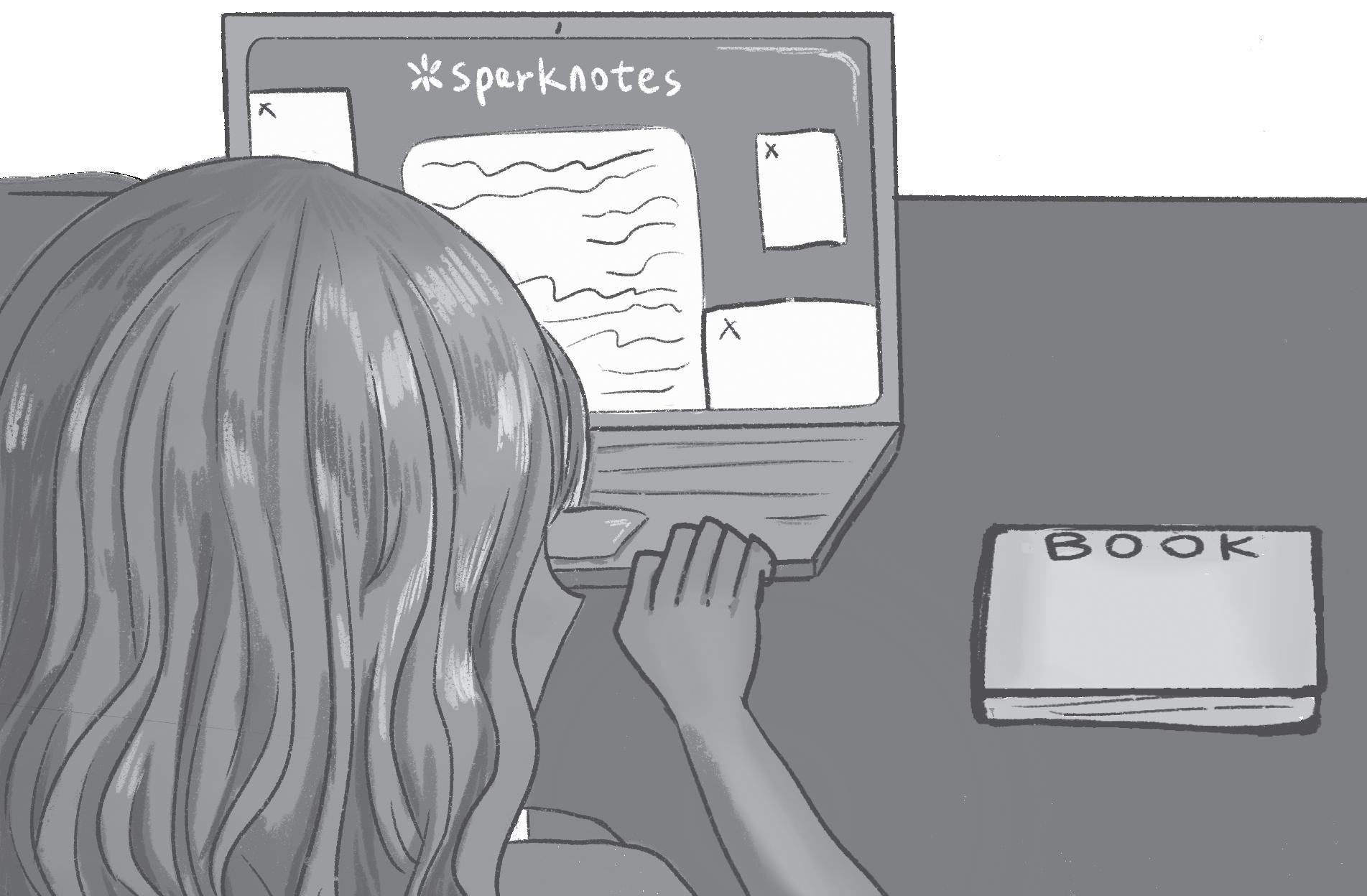


It feels unnatural to look after someone who has looked after you all your life. Te earliest memories of your childhood probably start with someone taking care of you while you’re sick, but sometimes, often suddenly, the roles get reversed. Personally, I already have a difcult time just taking care of myself and my dog, along with schoolwork and other activities.
But living in a home that has multiple relatives who are dependent on us due to chronic health issues carries an even heavier toll on my family.
As our relatives age, health problems become more frequent and severe, and it’s often the responsibility of family members to shoulder the burden of care, typically out of family or cultural obligations. Tese health issues may have been amplifed by the pandemic, as COVID-19 isolated the elderly, harming their mental and physical health.
A 2021 study published in the Journal of Adolescent Health surveyed over 1000 people and found that 35% of respondents between the ages of 14 and 24 had, or were currently taking care of an elderly relative, with an estimated 1.3 million youth taking care of relatives with chronic health conditions. Of that percentage, over 72% said they felt caregiving hindered their educational or career prospects. And this doesn’t even include the millions more who are responsible for their younger siblings or parents with disabilities.
While high schoolers are generally not primary caregivers, the stress and sacrifce required for full-time caregiving is often distributed throughout the entire family.
In an average family, parents may fnd themselves sandwiched between caring for their parents and their children, while simultaneously working full time jobs. Children then feel the efects of their parents’ stress and often become involved in caretaking roles themselves to help out. However, the efects of caregiving can be hard to notice, especially with students. A classmate may seem completely engaged during class time, or smiling and chatting with friends at lunch. But inside, every text message notifcation may be an emergency. Being on constant alert mode can distract students from their studies and harm their relationship with their friends.
Te stress of caregiving can also fracture families. In a 2003 study of relationships, nearly two thirds of caregivers reported unequal responsibilities between siblings. Resentment can then brew between siblings and other family members as some feel they have to self-sacrifce and put their life on hold while others can live unrestricted. Tis issue is also gendered: daughters are often expected to take on the role as primary caregiver, with daughters averaging 12.3 hours of care per month compared to sons at 5.6 hours.
My family is one of the lucky ones — we’ve been able to work well with our extended family to distribute caregiving equitably, allowing every member to take a break from the intensity of caregiving. On the other hand, I’ve seen more distant relatives of mine destroy decades-long relationships because each sibling did unequal amounts of work.
But the hardest part is that the work compounds while a loved one deteriorates more and more each day. With some diseases, you start to lose the person you once knew — almost like a premature death. And as a caretaker, it feels like the emotional grief has to be put of for later.
Te emotional grief has to be dealt with at some point though. It’s hard to lose a loved one, and it’s even harder if you’ve spent the last years of their life at their side, attending to their every need at every waking hour. I’ve used the word “care” six times so far in the context of helping loved ones, but what’s most important is that you’re taking care of yourself frst. You can’t support others unless you are able to support yourself frst. And when you reach out for help, either to friends, family members or other adults, the process of dealing with grief becomes much easier.
Whether playing piano or dancing ballet, freshman Leilani Chen is constantly surrounded by music, day in and day out. She’s not the only one.
In a Schoology survey conducted by Te Campanile over 97% of the 42 respondents said they listened to music daily.
And all of this music can certainly afect the brain.
David Hong, Associate Professor of Psychiatry and Behavioral Sciences at Stanford University, said processes such as MRI scans, which monitor brain activity, enable researchers to see the efects of music.
“One thing you could do to try to understand it is take to images of the brain,” Hong said. “You have people listen to music, and you track what’s happening in the brain at the same time.”
Hong said these scans allow researchers to study areas of the brain that music can stimulate.
“Music involves both emotion networks as well as reward networks,” Hong said.
“ Tey’re the same networks that are activated when you gamble or you fnd something very incentivizing.”
While music can afect a person’s reward networks, senior Kyle Vetter said he views music as a work of art and listens for the joy of it.
“I listen to music mostly to digest it as art and just to have something to do, so I’m not sitting around bored,” Vetter said.
But Hong said music stimulating these reward networks can help a student’s mood, making them happier and helping them out of a funk.
“If you are listening to music and enjoy it, it will positively impact you and might even decrease depression levels,” Hong said.
Tese efects can be seen in real life: junior
Sophia Dong said music helps regulate her emotions.
“It’s one of the main ways I cope with emotions,” Dong said.
Hong also said music might be able to help students cope with stress, which could help them around exam season.
Senior David Tomz said he uses music as a tool for relaxation.
“One reason (I listen to music) is just to relax,” Tomz said. “If I’ve had a stressful day, music calms me down.”
And Chen said music often helps her push through a hard project.
“If I’m working on a physical project, I will listen to music,” Chen said. “It keeps me going.”
While the full range of efects that music could have on the brain are still not entirely understood, Hong said it is possible that music therapy could help in other ways.
“ Tere’s a pretty good amount of research looking at music therapy and adolescents
that have autism, and it might have a positive impact on social learning,” Hong said.
Hong said there’s even a possibility that music can help with degenerative conditions like Alzheimer’s.
In the end, Hong said music is a useful tool, whether to cope with stress, to boost a person’s mood or even possibly to improve memory.
“Of the top of my head, I can’t tell you if there’s any research, specifcally if it enhances learning,” Hong said. “But when you’re under stressful situations, music can have a positive efect.”

As the sun sets, a gradual wave of darkness spreads across campus.
But for custodian Albert Hidalgo Balcita, the lights stay on, guiding him from classroom to classroom as he and 12 other custodians return each messy room to its pristine condition by the next morning.
Balcita said he works to maintain a school environment where students can thrive and be the most productive.
But Balcita said his job involves more than just cleaning classrooms.
“ Tere are a lot of moving parts involved in supporting the school,” Balcita said. “Our job is more about ofering customer service to students, teachers and staf. We like to call ourselves the backbone of Paly because a lot of people depend on us.”
As the newest addition to the 13-person team, custodian Andrew Huoch said he relies on support from other staf
Tere are some days that are crazy, but I just work on building my relationship with the other custodians here,” Huoch said. “ Tere’s always this positive energy and teamwork among the staf members and students here.”
At the same time, however, Balcita said the custodians sometimes encounter issues that create a more difcult environment for them to work in.
“ Te only negative part of our job is dealing with grafti in restrooms,” Balcita said. “All that does is just add to our day.
but they don’t tend to actually help clean up and make their jobs easier,” Shah said.
Despite these encounters, Balcita said the custodians do not let these situations distract them from completing their work in an efcient manner.
“We just like to keep moving forward,” Balcita said. “We don’t let any kind of negativity get to us, and we don’t let it sidetrack us in our work.”
Assistant Principal Jerry Berkson said, no matter the circumstances, the custodians are always more than willing to take on extra work to improve Paly’s conditions.
“We have the best custodial staf in the district by far,” Berkson said. “Every day, they get up to do their service with a smile and no problem. In fact, when it comes from me, I think they almost react too quickly because they just jump on things immediately.”
Balcita said although working for Paly and seeing students enjoy the classrooms and buildings maintained by the custodians is rewarding in itself, receiving positive comments makes his day.
“Anytime we get some kind of positive feedback from work we’ve done before, it really makes us feel good,” Balcita said. “We don’t get a pat on our back every day, but we do get it every once in a while, and it feels great.”
But Huoch said students often lack respect for custodial staf though their job is centered around creating a func
the students, but some students just don’t care, and they just leave trash all over the place or don’t listen to what we say,” Huoch said.
Shah said because most students do not know who the custodians are personally, they treat the custodians less respectfully.
“People don’t interact with the custodians as much, so indirectly they don’t show them the respect that they deserve for cleaning our campus,” Shah said. “And because some people don’t have a face to put to the custodians, they don’t tend to treat them the way that they shouldn’t be treated.”
Balcita said this situation is due to a lack of awareness and knowledge about custodians being spread throughout the Paly community.
“Not every student knows or sees what a custodian does, so they just view us as custodians,” Balcita said. “I think (change) starts out with teamwork and communication in the classroom about what custodians do and our impact on the school.”
To show appreciation for the custodians, Berkson said students should take more care of the school environment and not make the already labor-intensive job of custodians even more challenging.
“Students can make the custodians’ lives a lot better by keeping the bathrooms clean and throwing away their garbage,” Berkson said. “Students should just continue to do what they’re supposed to do, and I don’t think that is asking that

Shah said students do not fully appreciate the work that custodians do and should not rely on the custodians to clean up after them.
“People should act as if the custodians aren’t there and keep the campus clean, and the custodians will do their part to make it even nicer,” Shah said.
“But don’t make it their job to do the basic things like picking up your trash because you couldn’t be bothered to toss into the nearest
Although his job can be difcult and frustrating when students do not clean up, Balcita said he always recognizes when they help out.
“Whether it’s walking from classroom to classroom or even after school, if students can walk past and pick up a piece of trash and throw it in the trash bin, we would be more than thankful,” Balcita said. “Because when that’s not done, who does it?
 ART BY DORIAN LUO
ART BY DORIAN LUO
Te Really Good Podcast, hosted by social media infuencer Bobbi Althof, has amassed a huge following since its launch in April.
Te podcast, which went viral on TikTok and Youtube was featured on the “Today” show.
In the span of just fve months, it has gained nearly 30 million total views on her YouTube channel. Intrigued by people’s fascination with Althof ’s podcast, I embarked on a journey to discover what her podcast truly is about.
Unfortunately, “ Te Really Good Podcast” doesn’t quite live up to its name. While it takes a unique approach to podcasting by presenting unscripted, casual conversations with well-known people, the content itself is boring.
Te episodes also lack direction and a central theme, probably because they only consist of small talk. Te podcast fails to deliver anything substantial or thoughtprovoking. Instead, it provides a glimpse into how celebrities behave in casual settings, which may seem intriguing to some but ultimately failed to engage me.
Despite being new to the podcasting scene, Althof has managed to land interviews with A-List celebrities including Lil Yachty, Mark Cuban and Drake, who helped the podcast attract many new listeners.
Althof ’s signature interview style, characterized by her unconventionally dry humor, has led to painfully awkward yet amusing episodes.
I frst watched an episode featuring renowned businessman and “shark” Mark Cuban on YouTube. In the confnes of a warehouse, Althof and Cuban sat on the foor, engaging in what can only be described as a conversation about nothing substantial.
Te key takeaways? Cuban is wealthy (shocker), and both Althof and Cuban have lactose intolerance and enjoy shopping at Target. Due to the lack of direction and narrative of the conversation, I couldn’t get through the hour. It seemed like Althof was winging it, which made it difcult for me to stay engaged.
Next, I turned to the episode featuring Drake, which has over 9 million views. In the one-hour interview conducted in an unusual setting, a bed, Althof maintained a quiet and somewhat unimpressed tone. Tere was not much substance to the conversation. It lacked depth, and Althof seemed unenthusiastic throughout the episode.
A good podcast is not about how famous your guests are; it’s about delivering meaningful content that leaves a lasting impression on your listeners.
“ Te Really Good Podcast” may attract attention with its celebrity guests and have its humorous moments, but it’s far from the masterpiece its name implies.
If you’re looking for a podcast that keeps you engaged and entertained or provides valuable insight, “ Te Really Good Podcast” should not be next on your list.
Gulman Staf WriterAs the sun sets on a packed crowd at Marsh Manor in Redwood City, journalism teacher Brian Wilson and the Vida Blues Band prepare to launch into another song. Soon after he starts drumming to the rhythm of Amy Winehouse’s “Valerie,” the rest of the band joins in.
Like Wilson, many teachers have a love of music, whether it be performing, creating or practicing.
Wilson broke a hiatus from playing drums when he performed with Paly teachers in a show hosted by the music department in 2018. Te fve of them later created the band Willy and the Four Boys, which disbanded during the pandemic. Wilson now plays the drums for the Vida Blues Band, which formed in the spring of 2021.
Wilson said his favorite part about being in a band is the bonds he made with other members.
“A lot of being in a band is the camaraderie that you build: the friendships, the connections that you forge, beyond just the music,” Wilson said.
Wilson also said he especially enjoys playing music in public.
“I’m always intrigued by the fact that I feel like we’re doing something on a fairly regular basis that not very many other people ever do in their lives,” Wilson said.
During his frst show with Willy and the Four Boys, Wilson said he felt an energy in the crowd that he hasn’t fully experienced again since.
“You could feel it,” Wilson said. “ Tere was electricity.”
Wilson also said after this frst gig, one of his friend approached him, reminding him of how music could bring people together.
“He was sweaty and tired, jumping up and down and dancing, going crazy to the music,” Wilson said. “I’ll never forget this. He said, ‘I think we all really needed this. We all needed this release of energy.’”
Biology teacher Elizabeth Brimhall’s love for singing has taken her across the world.
As a member of the Peninsula Cantare — a community chorale — Brimhall has toured in Spain, Ireland and the Baltics, which all her to learn about diferent cultures.
“On a choir tour, one of the time slots will be going to cultural sites, museums, historic sites and exploring the country, usually with a local guide,” Brimhall said.
Brimhall also serves as the director of her church’s choir and said she appreciates the sense of community it gives her.
Te nice thing about directing choirs is it’s really lovely forging a community for choir, and having them be responsive and able to take basic notes on the page and make it into beautiful music through your interpretation,” Brimhall said.
Economics teacher Grant Blackburn said he started playing music in high school when his friend let him borrow his electric guitar. A month later, Blackburn bought his own and has not stopped playing since.
“I played all the way through my senior year in high school, all the way to college, all the way to now,” Blackburn said. “I play every day.”
Blackburn also played in Willy and the Four Boys. He also enjoys playing original, in-the-moment music.
“I like improvising, getting together with other people and just making something up on the spot,” Blackburn said.
Like Blackburn, from creating electronic projects flled with synthesizers to playing traditional rock and roll, English teacher Keith Tocci said he makes a wide variety of music.
Often playing in the moment, Tocci said he enjoys producing music when two ideas come together in unexpected ways.
“You teach your muscles how to do the basic things, and then you can surprise yourself with what you can come up with,” Tocci said. “It’s that kind of creative pursuit (that) shows you there’s more going on in you that you’re aware of, that you can produce these new things out of nowhere.”
Tocci said he enjoys creating music by himself because it allows him to produce more authentic music.
“Your understanding of your own musical interests goes deeper than what you think someone else likes,” Tocci said.
For math teacher Zachary Barnes experimenting with multitrack recording is one of his current passions.
“What’s funny about music production is you can spend your whole life doing it and still fnd things to like to improve, as is true of most art,” Barnes said.
Barnes said the process of creating music is more satisfying than the completion of it.
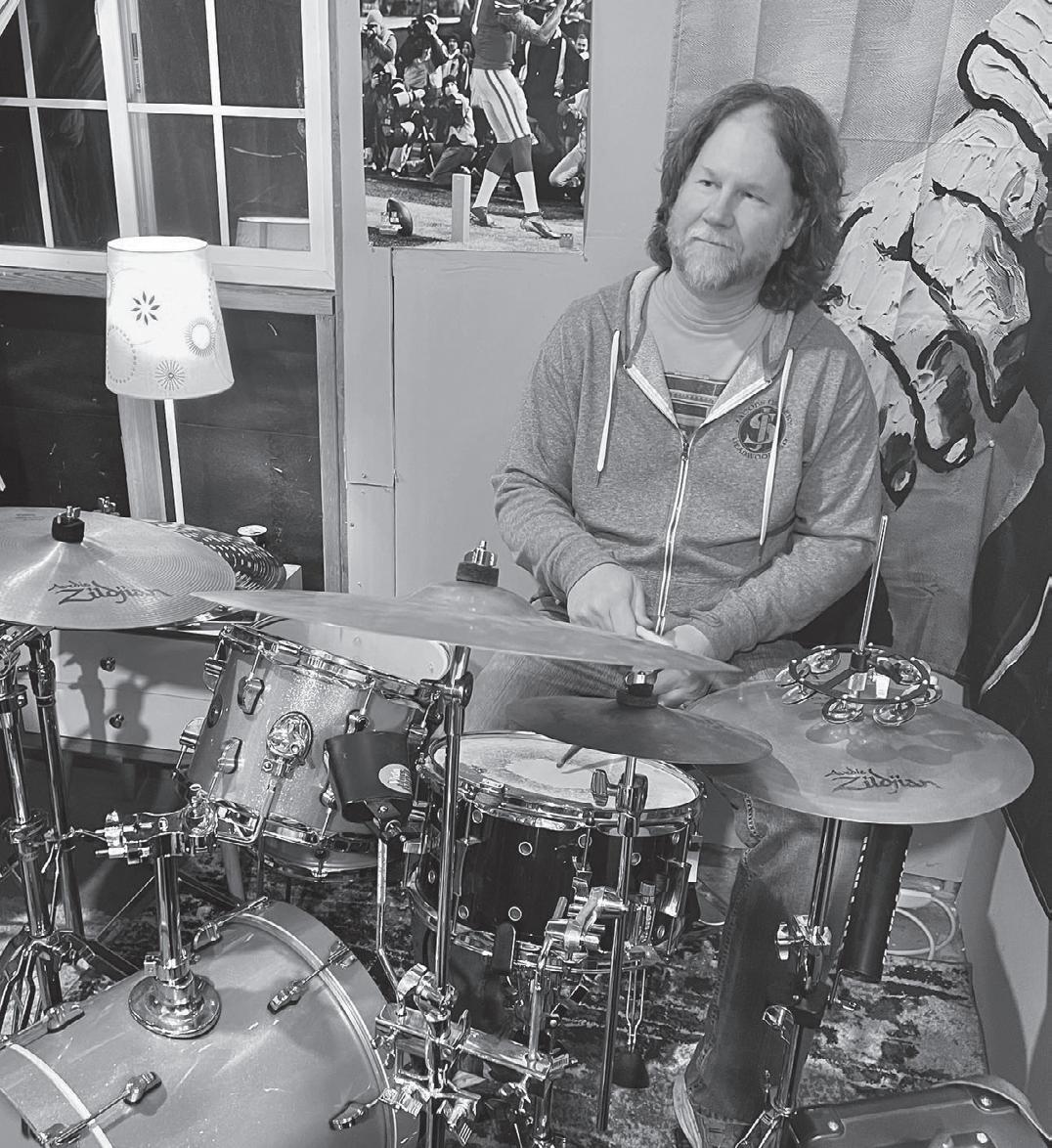
teacher and Vida
“It has a social aspect to it, but also has a creative exploration part of it,” Barnes said. “Honestly, there’s a therapy version of it too because you don’t sing about the days that went well, you sing about the things that you’re conficted about, the confusing parts of life.”
And Barnes said music has been an integral part of his life. “I’ve done two things obsessively: one of them is teaching, and one of them is making music,” Barnes said. “I’ve made a lot of money teaching math, and I’ve made no money making music. But for me, it’s never been about money. It’s been about quality of life. My life is so much better and richer because music exists.”
The rumble of construction machinery still fills the air near the Tower Building which began renovations in mid-2022
These renovations have led to significant changes on campus, from classroom relocations to the removal of social gathering spaces.
But Assistant Principal Jerry Berkson said the construction and the resulting noise and clutter around campus should end in early December.
In the meantime, Berkson said the construction is a necessary part of upgrading facilities.
“The whole Tower Building is undergoing renovation, with the first part just gutting it to give it a new edge with all new electrical, and now the walls have been put up and painted, so furniture started coming in last week,” Berkson said. “There’s still work on the roof, and eventually, there will be a big patio on the backside which will be really nice.”
Berkson said the renovation will bring the Tower Building up to modern standards, including ADA accessibility infrastructure upgrades.
Funded by a $20 million bond approved by the Board of Education in 2019 as part of the Measure Z Strong Schools Bond, the project is the first large-scale upgrade of the Tower Building since its construction in 1918.
Berkson said this upgrade is also related to the other construction projects on campus.
“We have the running of lines underground, which is why we had that electrical issue


a few weeks ago, to connect all the different fire panels, and there are some water pipes underground that relate to that,” Berkson said. “But there’s also the whole school which is just getting upgraded.” Berkson also said Cal Pacific Construction is renovating the century-old Tower Building.
Berkson said after the Tower Building is completed, renovations on the Student Center may begin.
Economics teacher Grant Blackburn said he is unhappy with the disruptions the campus construction has caused.
“The very first day, the construction company messed it up and cut the power, so all of a sudden, all of our meetings were disrupted.” Blackburn said. “Furthermore, there were porta potties on campus.”
However, Senior Morris
Tang said the construction around campus hasn’t affected his daily routine except when wifi in the science building went down.
“That day, I had to do my astrophysics work in the library during class, and I’m sure many others can relate to that as well,” Tang said.
For senior Jada King, though, not that much has changed.
“They’ve been doing construction on (The Tower) Building since I was a sophomore, so my routine is kind of built around it already,” King said. “It didn’t feel great when they gated up the quad, but otherwise the construction doesn’t affect me that much.”
Tang agrees.
“Over time, you just get used to the new class locations and find new social spots,” Tang said. “The ongoing construction hopefully doesn’t affect daily routines, but I feel the construction has changed the school’s atmosphere.”
Albert Jung Senior Staf Writer Olivia Atkinson News/Opinion Editor
Olivia Atkinson News/Opinion Editor
I was raised bilingual, switching between Bulgarian with my mother to English with my father. In middle school, I moved abroad for two years to Italy and Germany and gained fuency in both languages.
However, upon returning to the U.S., I felt out of place. My life abroad was immersed in diferent cultures and languages through which I discovered new ways to express myself. When I tried stepping back into my old life in Palo Alto, I couldn’t ft back in.
Being multilingual is something many Paly students can relate to. But the number of languages a person speaks means nothing compared to the new perspective of the world people gain from each language.
According to Eva Drago, co-founder of language learning app Beelinguapp, many people change their personality and the way they interact with others based on what language they speak, and I agree. I am a diferent person in each of my languages.
For example, when I speak Italian, I am more expressive and emotive than when I speak English. Te Italian language contains a variety of synonyms to describe feelings I cannot fnd words for in English. Even the sound of the words match their meaning: the s-sound of ‘susurare,’ which translates to ‘murmur,’ phonetically captures the sound of the word’s meaning.
In contrast, I fnd German to be a more powerful language –one that commands confdence. Te orderly structure of German society and the German language changes the way I act: more reserved and independent.
Trough the process of learning these languages, I discovered new corners within my identity and new lenses with which to view the world. People who speak multiple languages see their surroundings diferently because they have and hold diferent perspectives that add depth to what they are seeing, especially with their newfound insights.

Another example is reading literature or watching flms in a diferent language. Although English has risen in popularity and is often considered the modern global language, it is not the center of the world. Consuming English translations of a work is incomparable to the experience of reading a book in its original language. Tere are so many words, concepts and emotions that cannot be translated into any one language.
Learning languages has allowed me to open my mind and explore my identity. We are all living in this world, yet the way we experience it is diferent for each person. For me, it is like looking at life through a colored lens. Certain objects pop out immediately whereas others blend into a sea of hues.
I used to steal colored panels from my father when I was younger. I would put them up to my eye and peer out the window with a pink color gel.
As the world fell into various shades of pink, I noticed bright white restaurant shades stood out to me, whereas the green of the leaves blended into the walls of buildings. By learning diferent languages I am gaining access to diferent realities. For me, my languages, like the stolen color panels of my youth, add so much more to the world.
We should all step back and take pride in our multicultural and multilingual community at Paly, full of students from diferent backgrounds, and acknowledge each individual brings a dif f



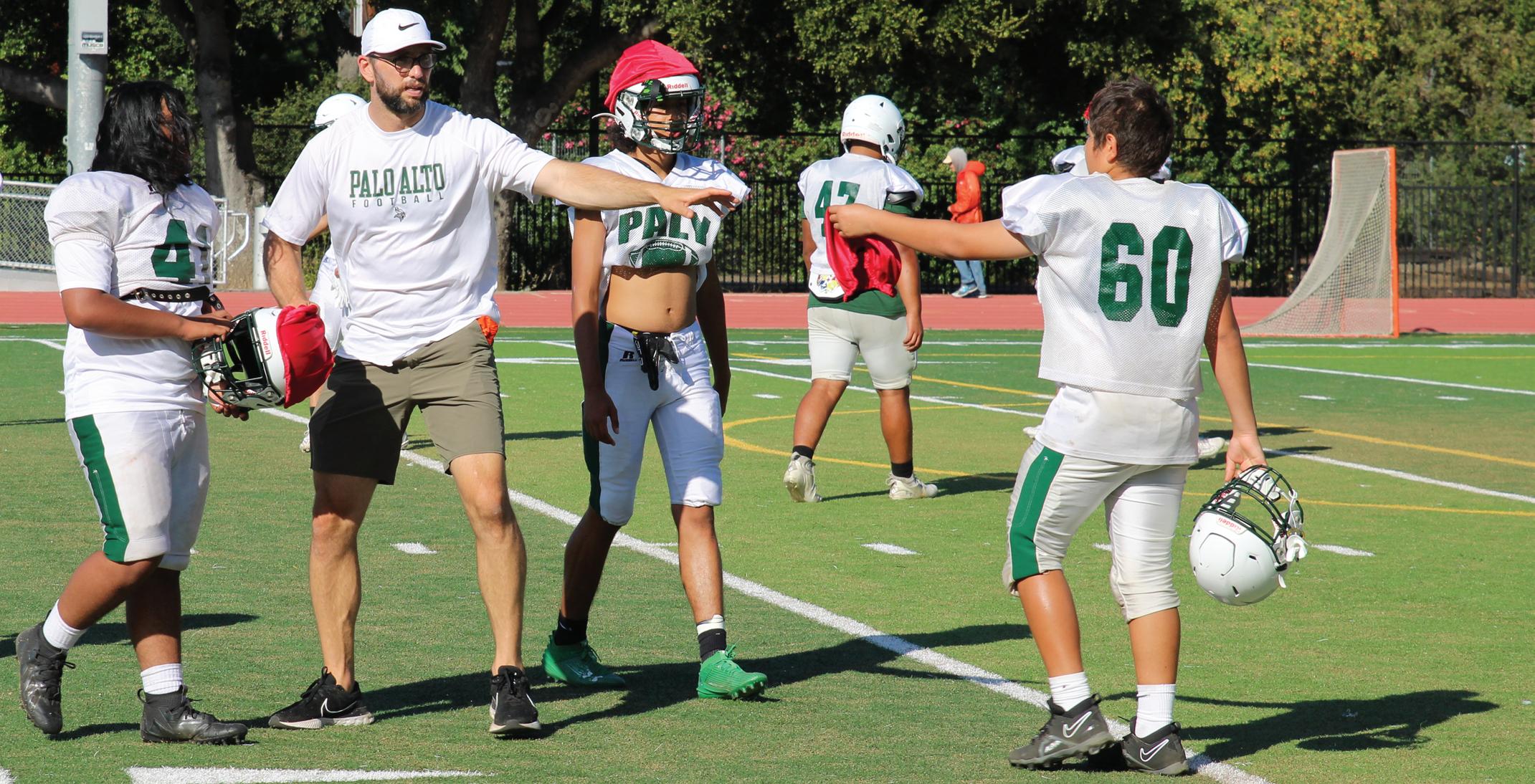
coach
The sharp blow of a whistle marks yet another failed repetition of the drill and sophomore wide receiver Dylan Robinson looks toward the coaches for clarifcation on the quality of his route.
Luckily for Robinson and the rest of his teammates, the junior varsity and freshman football assistant coach who clarifes the timing of Robinson’s route is four-time NFL Pro-Bowler and former frst round draft pick Andrew Luck.
Te JV football team started its season by winning its frst two games, and Robinson said credit goes at least in part to Luck who is using his deep knowledge of the game to help guide the team.
“He’s had so much experience. He caught on really quick and now helps everyone perform better,” Robinson said. “It’s been amazing to get NFL coaching experience because he has so much knowledge that he spreads to everyone, and practices have been a lot smoother since he’s been here.”
Despite his distinguished career in college football and the NFL, Luck said he does what he is asked out of respect for the program.
“Coach (DeGeronimo) has a need, and I fll in where the need is,” Luck said. “So I’m the volunteer. I’m the lowest man on the totem pole. He needed help with JV and freshman, so that’s where I went.”
Despite Luck’s modesty, JV head coach Jason Fung said the insight Luck provides is unique and working with him is an impactful privilege.
“ Te addition of Andrew Luck gives us a quick eye, a guy that can diagnose what it is we need to change to the quarterbacks instantaneously,” Fung said. “If you made a bad throw (and ask,) ‘Why did it happen?’ (Luck provides) swift feedback.”
Being a former quarterback, Luck said he specializes in the position he’s most familiar with, and JV quarterback Justin Fung said in addition to the respect Luck commands from the team, his experience as a top player allows for in-depth, individual guidance.
Te team defnitely respects him massively,” Justin said.” “On a personal level, he tells you details about the smallest things, like when to look up or what not to do.”
Being a four-time Pro-Bowler, Luck said his coaching strategy is infuenced by his time as a player.
 Neel Sharma Sports Editor
Neel Sharma Sports Editor
Te recent shift in Major League Baseball ofenses is one that baseball hasn’t ever seen. Not only are stolen bases at an all time high -as they have been since 2020 -- but bunt rates and line drives are down considerably.
In the last 21 years, the stolen base success rate has increased by 17%. Tis means stolen bases are not only more likely in today’s game, but they also have lower risk. Compared to 2022, there was also an all-time high increase in stolen bases of 4.6% this year.
Not only is this a sign of a more fast-paced version of baseball, it prompted rule changes. In April 2023, MLB implemented rules including the introduction of an enforced pitch clock, increased the size of the bases from 15 to 18 square inches, and started counting pickofs as disengagements and defensive timeouts.
Te disengagement rule means pitchers get two disengagements per at bat. Tese rules make it so runners can not only steal in a shorter amount of time but have a lower pickof risk when they do steal which incentivises base stealing even more.
Tese rules have created a more aggressive ofensive sport. Steals are appealing to an audience that wants action, and these rules make them more common.
“I certainly love sharing aspects of what I’ve learned throughout playing football, whether it’s Xs and Os strategy, technique (or) general character building stuf,” Luck said. Luck also said he is grateful for the opportunity to be a part of a team where he can work with players who share the same passion he has.
“I’m going to pursue a life (working) with young kids … I enjoy being around guys and girls that are excited to be out on the feld and learning the game that I love to play,” Luck said. “Football was where I wanted to get involved, and I’m thankful for Coach DeGeronimo to let me volunteer and hang out and help out on Mondays and Wednesdays. To me this is the way to stay involved in the sport.”
Before being picked frst overall in the 2012 NFL Draft by the Indianapolis Colts, Luck spent four years playing at Stanford. After becoming a two-time frst team All-American at Stanford, he chose to delay his NFL Draft date by a year to pursue his undergraduate degree in Architectural Design at Stanford. Luck said a reason for his return to Palo Alto was his interest in earning yet another degree from his Alma Mater.
“I graduated in June with a Master’s in Education, and it was a great experience,” Luck said. “I love Stanford. My wife and I met at Stanford, and we owned a house here, so it was easy. I love the university, and the herd that it attracts. I’m interested in sports, education and the intersection of both.”
Since taking a prolonged hiatus from football following his retirement, Luck has made few reappearances in the sport. However, he said ultimately his return as a coach was driven by his love for the game.
“I’m certainly very fortunate that I got to play at (a high) level and enjoy it. It was awesome,” Luck said. “To play a game as a professional was pretty stinking sweet. I realize not everybody gets the opportunity to play for that many years, and I was exposed to a lot of diferent coaches. So I try to pick aspects of all the things that I was taught that resonated with me and apply it down here.”
Bonnard & Rahul Shetty Lifestyle, Sci/Tech Editor & Staf WriterRonald Acuña Jr., for example, has already achieved a 60+ steal season and is the frst to do so since Miami Marlin’s Dee Strange Gordon in 2014
So-called "small ball" has decreased under these new rules too. In baseball, the biggest example of “small ball” might bunts. Bunting is when a player doesn’t swing at the ball but merely taps it lightly and sprints for frst base. “Small ball” strategies such as bunting mean a team’s ofense consists of smaller hits like singles and perhaps doubles. It is about getting on base as opposed to hitting home runs or extra base hits.
 Naveen Narayanaswami Staf Writer
Naveen Narayanaswami Staf Writer
Despite smoky conditions from Te Smith River Complex fres in the Northwest corner of the state, head coach Michael Davidson said cross country excelled at its frst scrimmage of the season against St. Francis and Gunn. Te event, which was a two mile race for all teams, was hosted at Gunn on Aug. 31.
Davidson said the meet went well and was a good introduction to the team for his new athletes.
“We had (a) good showing from some of the athletes we expected, and it’s good for some of the new folks to get a chance to learn how to race and get some experience,” Davidson said.
Junior and frst place fnisher in the girls division Kinga Czajkowska said the meet was tough due to the air quality but was also a good endurance test for the new runners.
“ Te smoke was kind of an issue, and it was also really hot,” Czajkowska said. “So that’s kind of a test-by-fre for a lot of new runners who haven’t really been used to this kind of distance.”
Davidson said his goals for the year are the same as the previous year's for both teams.
“Every year they are the same for me: qualify one or both teams to state meet, win leagues and win or do really well in CCS,” Davison said. Czajkowska said the girls team has a lot of young talent that can help it in coming years.
“I am really proud of the varsity girls and JV girls,” Czajkowska said. “We have a lot of very strong sophomores and underclassmen in general which I think is going to carry our team pretty far over the next couple of years,”
For his part, Davidson said the coaching staf has a lot of emotions regarding the upcoming season.
“With our coaching staf, we come out every day, put our heart and soul into training the kids and giving them the very best we have, so we hope and expect the same,” Davidson said. “It’s a little nerve wracking because we can’t get to be on the line with them, but when they’re nervous, we’re nervous, and when they’re excited, we’re excited.”
Czajkowska said the biggest potential issue for the team is injuries.
“We have some very strong runners that might just be out for important meets because things like shin splints or stress fractures, and that would be really sad,” she said
As far as the boys team goes, senior August Mondragon said he thinks it’s going to be a great year for them.
“We’re excited,” Mondragon said. “Everything is going to be amazing this season. I think that it’s going to be the most fun season.”
less-exciting small ball strategies also decreased in the MLB: the league also had it its lowest overall batting average last season (.243) since the 1968 “power outage” season (where the overall average was .230).

Bunting as a strategic “small ball” technique is used to advance base runners or poke at faws in an opponent’s defense. Over the last 25 seasons, the rate at which players bunt has decreased by roughly 60%, which is a sizable indicator of the lessening role bunting has in ofenses. And since 2011, bunt rates have decreased by 63%. Not only bunting but its
Excluding the steroid era of baseball from the ‘90s into the mid 2000s which boasted inhuman home run rates, baseball was trending towards batters who hit for average. Tis means that as opposed to hitting a home run every time a player steps up to bat, the player instead specialized in hitting to get to frst base.
Home runs were still a fan favorite, but they were not the goal at the time. When looking at the line drive rate, for example, three of the top fve highest of all time have occurred in the last eight years.
Tis rate represents hitting for average instead of home runs. But as less aggressive ofensive plays like bunts and hitting for average have dwindled, more power hitting
and stealing bases have increased. So is baseball back again?
From the late 2000s to mid 2010s, baseball was thriving in its small-ball ofensive scheme. Recently, however, hitting for power has become the most prominent. Not only has hitting for power helped increase attendance for many teams, but it has also helped viewership for the MLB. So even though the league’s batting average was low last year, home runs were up.
Hard-hitting players like the Angels Shohei Ohtani and the Yankees Aaron Judge have boosted the sport's popularity with their slugging, but they have also added hype to the sport.
Tink basketball: Michael Jordan and Kobe Bryant helped the sport gain both coolness and hype that brought basketball further into pop culture. Te same could happen with baseball. But the player blueprint is also evolving. Te MLB is currently scouting taller, more powerful players who also run with immense speed. Te prospect that best illustrates this is Cincinnati Reds rookie Elly De La Cruz, who is not only the fastest player the MLB has ever seen but also a power hitter with a strong arm in the infeld.
Tis is the new era of baseball. One where speed and power hitting trump all but defense. And this era seems to have woken the MLB’s 15-year dormancy -- which started when the steroid-era ended -- and turned it into a league ready to return to pop culture prominence.
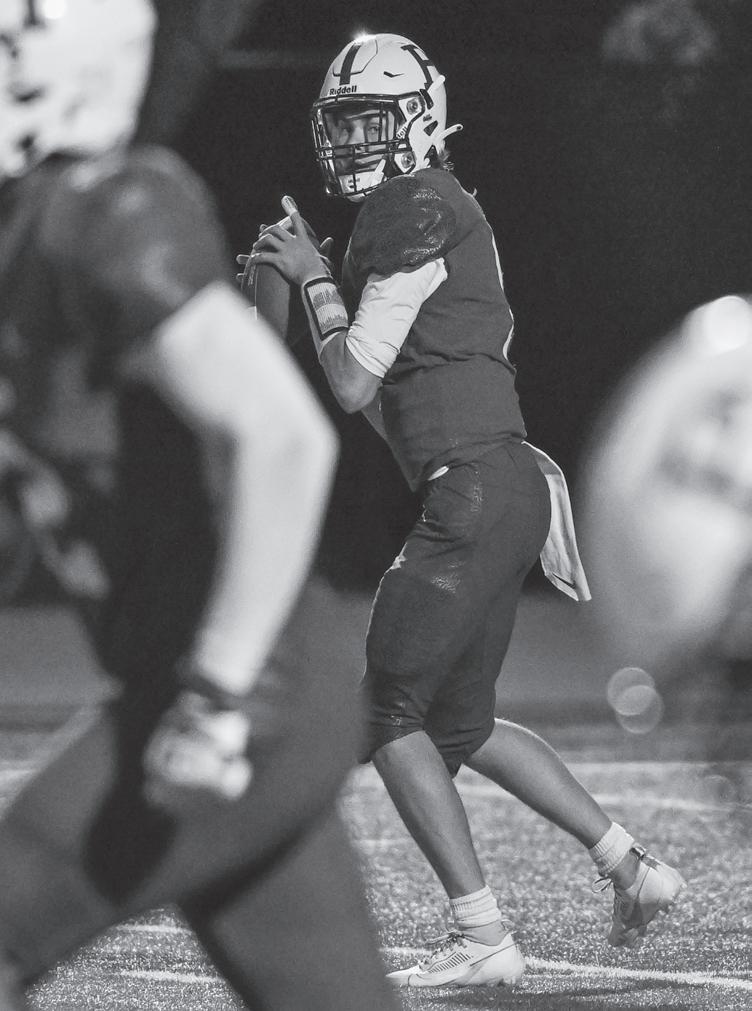
With a 2-1 record and a decisive 28-10 season opening win against Fremont, Assistant Coach Malcom Davis said his team has high expectations for the rest of the season.
“We started of hot, and then we kind of fell of at halftime. But it came out really well,” Davis said. “We handled what we needed to do when we frst got on the feld and out scored on all three drives.”
Junior and wide receiver Jeremiah Fung, who scored a touchdown, said he appreciated the supportive and electric atmosphere and school spirit, which contributed to the season-opening win.
“We had all the students here including the band, cheer and dance teams,” Fung said. “All the families came out and we had a great game.”
After the frst game, Davis said he was pleased with his team’s efort.
“We’re looking forward to next week, but it’s going to be tougher (the rest of the way),” Davis said. “We’re feeling confdent right now.”
In its second game, though, Palo Alto scored fve touchdowns at Leland en route to a 38-20 win.
Senior and wide receiver Jason Auzenne had 279-yard and two-touchdown performance versus Leland, leading him to a fnalist nomination for Mercury News’ Sports Player of the week.
“We did a great job on both sides of the ball, but I think we could improve on the smaller things like knowing who to block,” Auzenne said.
Special Teams Coordinator Brandon Byer said he was satisfed with how the game turned out but thought there were more details that could have gone more smoothly.
“We did a great job holding blocks and opening up a seam (on Auzenne’s kick return),” Byer said. “We still need to get better at fnishing tackles and know our responsibilities whether it’s blocking or something else.”
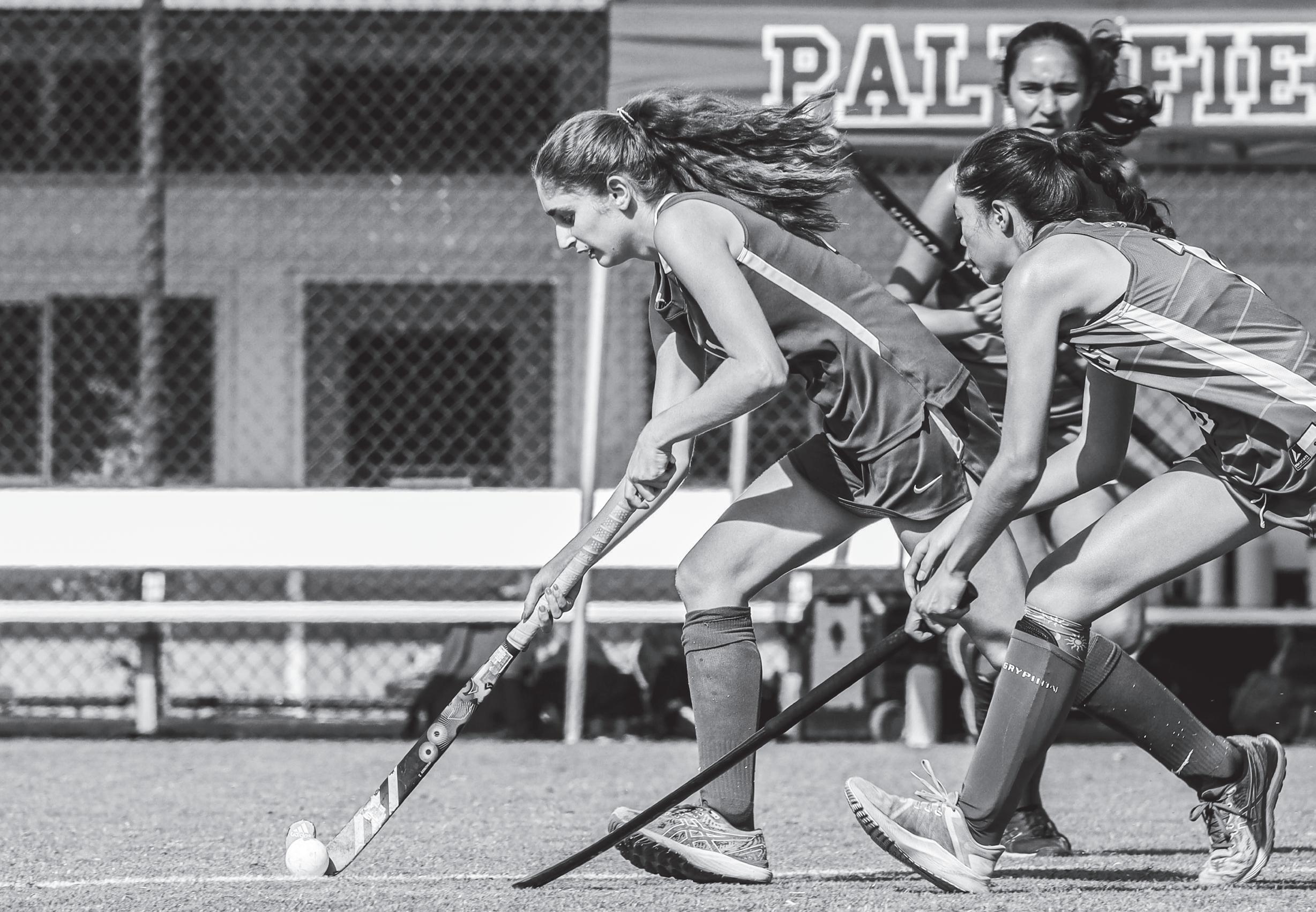
Although the feld hockey team’s frst preseason game against Los Altos ended in a 0-0 tie, senior and center midfelder Hailey Kleiner said her team put in a lot of efort, and she is hopeful for the rest of the season.
Kleiner said the players focused on coordination before the season started, which helped them during the preseason opener.
“We did really well considering it was extremely hot out,” Kleiner said. “We were really hustling, and we defnitely did a good job on working together, especially since it was our frst game.”
Coach Danielle Yau said she is quickly adapting to the new environment despite it being her frst year coaching a team.
“I’ve never coached a team before since I just graduated from UC Davis in March,” Yau said. “ Tis is defnitely something new, but I really love coaching, and it’s super fun to teach a sport I’m pas-
sionate about to high schoolers.”
Junior and center forward Alyssa Lin said Yau is a crucial addition to the team and its success because of her ability to connect with the players.
“I could not have asked for a better coach for our varsity team,” Lin said. “Coach Dani is supportive, open-minded and kind, and she really pushes us to be our best on the feld.”
To support the team, Yau said she focused on creating an engaging environment for the players.
“My number one priority is just for the team to have fun with feld hockey,” Yau said. “Field hockey is not super common, so
I’m just trying to get more people to understand how it’s played and what’s fun about it.”
Senior and goalie Coral Johnson said the team has improved its strategy and passing when compared to last year.
“We’re pretty strategic about our passes, which is a strength of ours,” Johnson said.
“I always noticed people looking up before they passed, which is crucial for getting the ball across the feld.”
Lin said the team also hopes to improve its communication and court awareness.
“We play so much better and have a higher chance of scoring whenever we start talking to each
other and letting each other know where we are,” Lin said. “It can be stressful when you’re with the ball, and if you don’t hear your teammates telling you where they are, you’re going to end up losing the ball or passing it to the opposing team.”
Johnson said it is crucial to communicate more because doing so will help the team feel supported by one another, more effectively pass and score goals and improve their season as a result.
“Talking to each other on the feld creates a lot of community,” Johnson said. “And I think everyone gets hyped up when we realize that we are all there for each other.”
Lin said feld hockey requires building a strong community, and being able to learn from her teammates has brought the team closer together.
“We’ve got some really strong players, and it’s been really awesome learning new tips, tricks and techniques from our seniors,” Lin said. “I really like how we’ve been collaborating, and it’s been a great start to the season.”
Following its second win of the season against Mercy High School, 3-2, girls volleyball remains undefeated.
Freshman Maura Hambley said the frst two sets for the Mercy match were played poorly because the team is still getting comfortable and in sync with each other.
Te last three sets were the best we have played this season, but the frst two sets took a long time to wake up and start playing like ourselves,” Hambley said.
Te team won a reverse sweep game, which Hambley said is where a team loses the frst two sets but comes back to win the last three. With the team losing the frst two sets 17-25, they decided to regroup and change their strategy, junior Noa Rochkind said.
Junior Naama Green said her team’s ability to get a reverse sweep stems from its determination and motivation.
“We all decided to come together and play as a team, and bring up our energy because we knew if we lost the third set we would lose the game, so the next set was our chance to win,” Green said.
During the next three sets, the team worked on becoming stronger and more aggressive with ofense by translating what they worked on during their practices into the game, Rochkind said.
“Many of our drills focus on hitting, and it takes up a signifcant part of practice,” Rochkind said. “We also have some plays that we have been working on implementing.”
Green said teams often win by having more skill than motivation or energy, which allows for the players to be focused on a specifc goal, which can be even more important for a win.
“We learned a lot through this game,” Green said, “For example, we can’t win without energy. It is one of the most important things in volleyball; it’s not just about how hard you can hit a ball.” = Going forward, Rochkind said the team plans to prioritize its ofensive skills by setting goals and performing drills to help with serving, hitting, and taking shots on swing placement.
For defense, they are working on blocking, junior Sophie Mies said.
“Our coach, Chris Crader, always says that we should aim to be the most improved team in the area,” Rockhind said. “Aside from this, we also aim to win as many games as

possible and perform well at CCS.” Outside practice or games, the team is looking forward to spending time with one another during team bonding or at team lunches. For them, a big part of volleyball
is community, and one way they demonstrate this is through themed dress-up on game day.
“We got a lot of depth, a lot of girls are stepping up their game, and we have good chemistry and a lot of
 Rohan Bhatia Sports Editor
Rohan Bhatia Sports Editor
As the sun sets on another summer, fans from all around the world fock to their TVs to watch the best of the best duke it out on the pitch in what promises to be another riveting season of British football.
Following the summer’s transfer window, here are my picks for the fnal results of the English Premier League:
To the shock of absolutely nobody, I predict Manchester City will nab the title for the fourth year in a row.
Mastermind manager Josep Guardiola will march his squad into battle and come out on top once again.
Previous captain İlkay Gündoğan departing for Barcelona is a setback, but a minor one at that.
Manchester City has an abundance of talented players at its disposal, and more than enough cash to invest in new players –– talented players like defender Josko Gvardiol and forward Jérémy Doku.
Additionally, you can’t ignore the absolute machine that is striker Erling Braut Haaland.
Haaland will wreak havoc on even the most talented defenders and carry City to the top spot once again.
Arsenal will lose out to Man City to fnish in the runner-up spot once again this year. Arsenal had a busy transfer window.
Tey spent nearly $200 million on midfelders Kai Havertz and Declan Rice alone.
Tese are brilliant but expensive players.
Tis investment sucked up a lot of cash, and their only other signifcant new purchase, Jurrien Timber, was unfortunately injured in the team’s opening match.
While the new players might struggle to outshine their price tags, the squad will still have the strength to battle up to second place.
In third place will be Liverpool. In its transfer window, Liverpool focused on rebuilding its midfeld, a weak area last season.
It waved goodbye to midfelders Jordan Henderson and Fabinho, and welcomed an entirely new midfeld consisting of Alexis Mac Allister, Wataru Endo, Ryan Gravenbach and Dominik Szoboszlai.
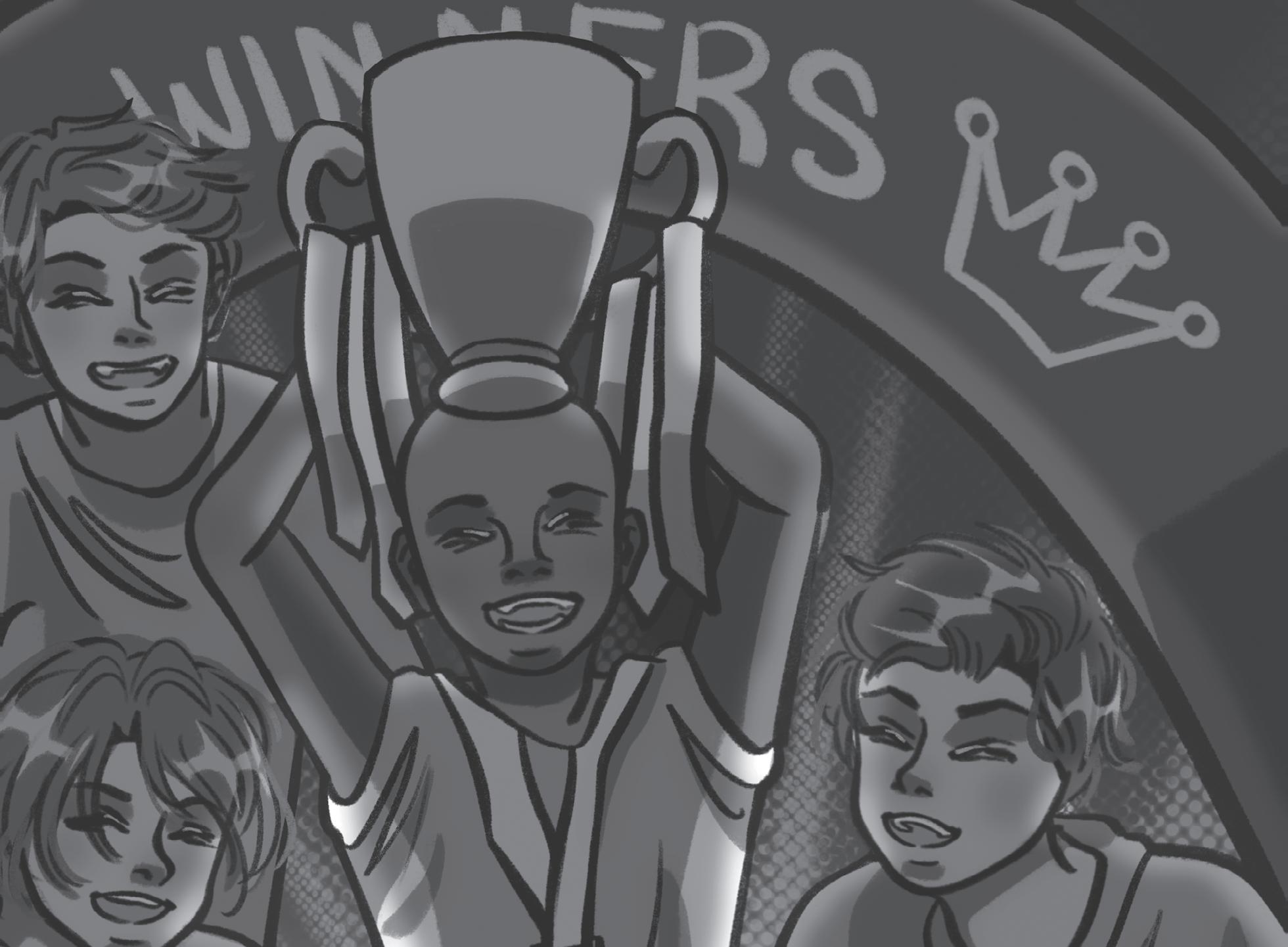
Te team crucially managed to retain club legend and top goal scorer Mohamed Salah for another year despite his links to Saudi Arabian clubs.
If Liverpool can maintain the momentum that it began building near the end of last season, the team is in for a respectable campaign ending in third place.
Many pundits place Newcastle United out of the top six for the next season because the team will be playing in the Champions League for the frst time since 2003, meaning it will be playing more games and risk burning out. However, I think the team deserves a little more faith.
Newcastle hasn’t sold any signifcant players, but it has made three big buys over the summer: forward Harvey Barnes, midfelder Sandro Tonali and defender Valentino Livramento.
Tese players will add depth and stamina to the squad, prevent burnout when Champions League matches start and assist Newcastle in the charge for the fnal Champions League spot.
In ffth place will be Tottenham Hotspur, which has the foundations for a decent season.
New manager Ange Postecoglou is bringing life back to the club. Tottenham’s defense was shameful last
season: the team conceded 63 goals, 16th place in the league for goals conceded.
In eforts to bounce back, it purchased goalkeeper Guglielmo Vicario and defender Micky van de Ven for $20 million and $37 million respectively. Additionally, Destiny Udogie has returned from loan at Udinese.
However, the elephant in the room, club legend Harry Kane, left for Bayern München this summer. While Tottenham typically struggles to defend and excel on the attack, this season may be the opposite.
Postecoglou has a plan to bolster the ofense involving forwards Brennan Johnson, Manor Solomon and midfelder James Maddison, all new signings. However, the extent of the efect of Kane’s absence is yet to be seen. However, Tottenham’s elimination from the Carabao Cup, and the lack of European football means the team can focus all its energy on the Premier League and snatch the ffth spot.
In sixth place will be Manchester United, which is in a tough spot right now, with club higher-ups being questioned amid the various swirling controversies.
Jadon Sancho openly criticized manager Erik Ten Hag after being not being rostered against Arsenal.
To make situations worse, both Antony and Mason Greenwood have been accused of domestic violence against former partners.
Te club did not do a good job of handling these scenarios, and its reputation is under fre.
When it comes to players, they are already in a tough spot with many injuries.
Tis will only get worse when Champions League matches start.
Teir transfer window didn’t do them many favors either.
Te team spent lots of money on a new goalkeeper, defenders and midfelders.
But what it really needed was a Premier League proven goal scorer.
Te team’s answer to this problem was an $80 million gamble on 20-year old Rasmus Højlund, an unproven Dane from Atalanta BC.
United is putting a lot of pressure on Højlund, and I don’t think he has enough experience to thrive.
But now, let’s jump all the way to the bottom of the table and see which three clubs are going to get relegated down to the second tier of English Football.
I predict Everton will fnish in the 18th spot, ending its 31-year run in the Premier League.
As much as I want Everton to pull of a fairy tale story and escape
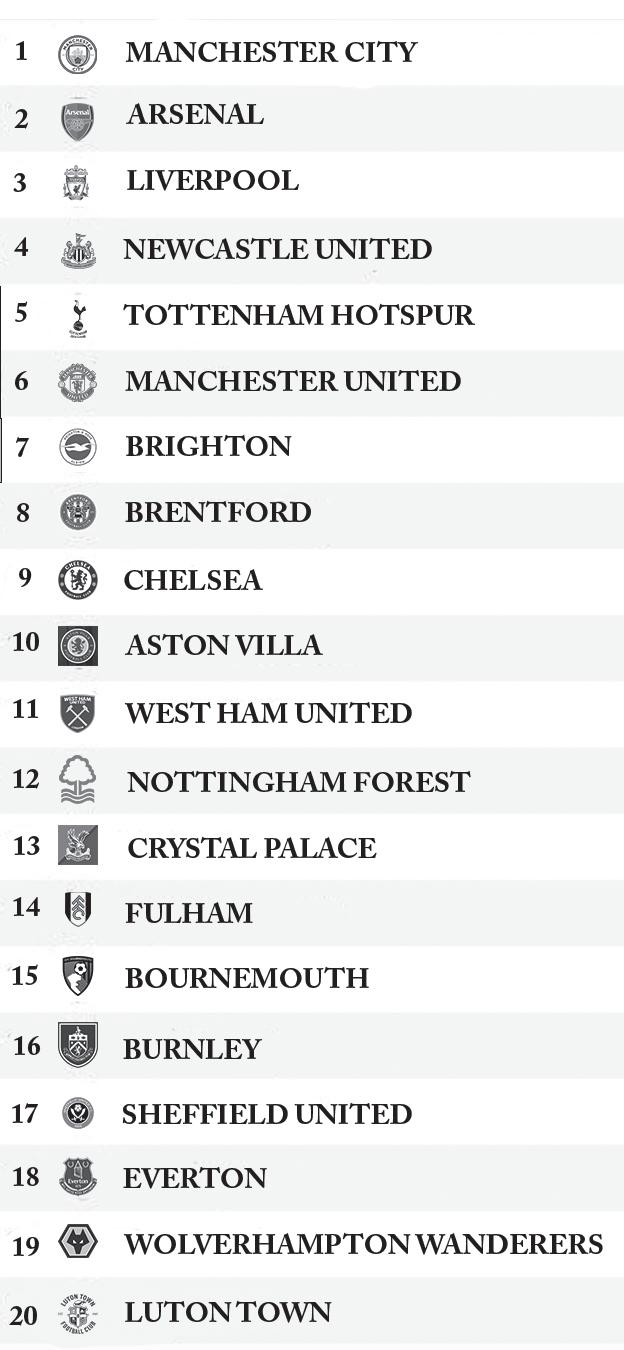
relegation by the narrowest margin again, the team simply hasn’t had the transfer window to back it up. At this point, they’re playing tired football.
Wolverhampton Wanderers will take the 19th spot. During the summer, Wolverhampton has been all sell and no buy.
Tey’ve waved goodbye to crucial players like previous club captain Ruben Neves and Matheus Nunes.
Even worse, manager Julien Lopetegui parted ways with the club less than a week before the start of the season.
Te new manager, Gary O’Neil, will need to work a miracle to get this team to escape relegation. And fnally, getting sent right back to the second tier, Luton Town will fnish in 20th place.
I really wanted to say that Luton could escape relegation: so much passion shines from that little club. But it just won’t happen.
Tey simply don’t have the money or resources to rival other clubs on the biggest stage in the world.
When the fnal whistle blows in May, some fans will revel in glory, while others lament a season of missed opportunity.
But only one team gets to spray the champagne and cap of another enthralling season.
Since qualifying for CCS and placing second in the 2021-2022 season, girls golf placed 6th in the 2022-2023 season rankings and has been relegated from its previous division. Despite this setback, senior Alexa Pineda said with the addition of new players and improved tactics, the team’s morale is at an alltime high.
“Our frst few matches have shown that the team can be really good this year and has a lot of potential,” Pineda said. “I also want us to have a lot of fun this season and build a really strong team relationship.”
Pineda also said the seniors from last year continue to serve the team as excellent role models and boosters of team spirit, so their graduation was especially difcult for the team.
However, the addition of new players helped rebalance the team dynamic, she said.
“Last year we lost two seniors from our starting fve, which will most likely impact our scores,” Pineda said. “But we gained a super strong freshman, Emma Wang, who has shot really good scores in our frst

couple of matches. She will be really impactful to the team this year.”
Coach Doyle Knight said his team has faced many challenges to get to where they are.
“I only had eight girls try out this year, so I was limited,” Knight said. “It’s been a challenging year, but the girls are doing great.
We just had a tournament on Wednesday that we won which was really encouraging. We have another tournament on Monday, so it’ll be a nice test to see how they do.”
Knight also said he feels incredibly confdent about the team working its way back onto the rankings this season.

Just because boys water polo has won the league championship two years in a row and qualifed for CCS in open division, doesn’t mean it’s easy to predict what’s in store for the coming season.
Junior and utility player Roan Haney, though, said the team’s goal this year is to keep up its competitive reputation.
“Our goals again are to get to CCS (and) hopefully win league,” Knight said.
“We’ll see what happens, but I’m really happy with the (performance), and the way they have progressed and taken the time and efort to get better and get more consistent, so that’s been very helpful and very encouraging.”
“Even with diferent personnel from last year, the dynamics of our team still stand,” Haney said. “I think we can go with that and perform our best this season.”
Coach Bob Greene said he hopes his coaching style motivates his team to keep the winning mentality they have had for the last two seasons.
Te last two years I wanted to win a championship,” Greene said. “(We) hadn’t won it in
a while. We’re back to back champions, which is great. We want to go through leagues and fnish in the top three, get a good seed in playofs and win another championship.”
Senior captain Charles Ryans said his team’s roster change can be seen as a positive.
However, the continuous loss of players every year has hurt team chemistry.
“We really have to change up our strategy this year,” Ryans said. “As (Coach) Bob said, we’re a run and gun team now because we lost a lot of big guys. I’m our only big guy now, so I have to work hard in center, while the rest of our team has to work on counters, driving and passing.”
Ahigh-pitched, electric whirr projects outward as a group of students jog alongside their homemade vehicle, a three-wheeled, open-air contraption with solar panels mounted on the roof.
Capable of accelerating up to 60 mph, this electric vehicle differs from a mass-produced Tesla in its significance to Paly — it was built by students to compete in the 30th Annual Solar Car challenge in June. The challenge consists of a 1,400-mile cross-country race for eight days from Fort Worth, Texas to Palm Springs, Calif. Palo Alto Solar Vehicle is just one out of the many ways that students experiment with home-built vehicles.
Though the students road-tested the vehicle, junior Liam Livingston said weather-related difficulties impeded the ability of the team to participate.
“We pulled out of the race because of heat concerns,” Livingston said. “Then the race also got canceled halfway through (because) some of the people and staff had health issues.”
Team captain and junior Manasvi Noronha said potential improvements to the vehicle could have mitigated the heatrelated issues that the team experienced this year.
“Our car was open, and there were no coverings,” Noronha said. “We had one fan on the side which was put in a risky posi tion. (Next year) we’re planning on making sure that our drivers are safe and that the vehicle is covered so that they have more protection from the heat. It was 118 degrees.”
Despite the setback, Livingston said the team hopes to participate in a more conventional motor race with a circular track next year.
“We’re starting back up back up soon, and I’ll also be teaching people how to build electron ics,” Livingston said. “Next year is going to be a track race. It’s the same organizer and it’s still in Texas.” Livingston also said the team hopes to ex pand beyond the solar car competition with a new sponsor this year.
“I’m planning to build a go-kart as an opportunity to teach people how to build and work on electronics,” Livingston said. “It’ll be sponsored by the Miraj Race Club, an organization that’s above the solar car team that will be able to sponsor other events similar to it.”
Noronha said efforts to expand include more than just new competitions, as the team hopes to recruit a broader demographic of people.
“Hopefully, we’re looking to get some new members either from school, or we have applications open in Gunn too,” Noronha said. “We will definitely need a lot more people for this year, and we’re looking for people who can be on the business team or be able to code.”
Student-produced vehicles, however, can include more than just automobiles. Junior Max Dixon, another member of the team, said his creations have ranged from land-based to waterbased transportation.
“When I joined I saw a couple of the seniors had e-bikes, and I wanted one of my own,” Dixon said. “I made the e-bike, minibike, and now we have the boat.”
Not as quick as his other builds, Dixon said the boat offers a chance to see the Bay as a means of leisure.
“The boat is slow. It’s a cruising boat,” Dixon said. “We take it out to the Bay and it could probably run for 25 miles. If we have a lot of batteries, it could probably go 50 miles.” Students can build vehicles through
other means as well. Instructor Doyle Knight said Auto Shop classes can offer additional creative outlets for students to build vehicles.
“We started an Auto 3 class, and we’re making electric vehicles,” Knight said. “The kids have done the majority of it. I guided them along, but they built an electric go-kart and electric little scooter. Several years ago I had guys make a motorized electric desk.”
Knight said students can also modify pre-existing vehicles as an alternative to building from scratch.
“We’re taking a golf cart and changing the type of batteries that are in it while making it more modernized,” Knight said.
Livingston’s journey into building home-made vehicles began with a modified electric bicycle.
Self-building an electric bicycle, Livingston said, taught him the intricacies of how the bicycle works.
“The second one I built during the first semester of sophomore year I have ridden over 1500 miles on it,” Livingston said. “I use it all the time. Whenever it breaks, I know exactly what’s wrong with it. So I can just fix it right away.”

A teenage girl lays slumped against a washing machine, a blunt dangling precariously between her fngertips.
In another room, music blasts from speakers, wisps of smoke hover above teens toppled upon bile-stained furniture.
Tis is just one of several scenes from the critically acclaimed 2019 HBO drama, “Euphoria.”
But junior Faizan Kashmiri said portrayals of rebellious teens like those depicted in “Euphoria,” do not accurately depict real teens.
“It is frankly an awful depiction of teenagers,” Kashmiri said. “ Te media depicts teens as totally irrational, sex-crazed, drug-taking social parasites who add nothing to society.”
Te human brain undergoes continuous development past a person’s mid 20s.
During teenage years, ages 13 to 17, the brain is solidifying the prefrontal cortex, responsible for rational thought and decisionmaking.
In addition, the amygdala, a major processing center for emotions, grows in size, causing heightened dopa mine levels and emotional variation.
So, it may be that neurological changes in the teenage brain are the cause for society’s interpretation of teens ac cording to science.
AP Psychology teacher Christopher Farina said these neurological developments can cause teens to often make risky decisions without evaluating the consequences.
you’ll be able to relate to these (issues),” Tong said.
Farina said teens are also in an environment that allows for risk-taking behavior because they are still protected by their parents and school.
Because of this protection Farina said teens can explore independence without the fear of the severe consequences that adults might face.
“During this age, (teens) are looking to strike of on their own and start separating from their parents or caregivers,” Farina said.
According to “Brainstorm,” a scientifc book on teenage development by UCLA Professor of Psychiatry Daniel Siegel, teens often don’t act with bad intentions, and they shouldn’t be seen as disruptions to society.
“Adolescence is not a period of being crazy or immature,” Siegel said. “It is an essential time of emotional intensity, social engagement and creativity.”
ART BY DORIAN LUO
“(Teenagers) are even more highly motivated by rewards than they would be either before their teenage years or after their teenage years,” Farina said. “ Tey can also be more impulsive at this age than they will be later because their prefrontal cortex is still developing.”
Senior Carina Tong said biological diferences between adults and teens don’t mean the latter are unable to make mature decisions, though.
“Only a certain chunk of all teenagers (act rebellious),” Tong said. “I was never very rebellious. I always listen to my parents. And most of the time I agree with what my parents are recommending me because I trust them, and I’ve come to see that their advice overall is helpful for me.” Tong said when teens do act up, they may be reacting to problems in their internal or external environment such as tensions at home, mental health problems or stress.
She said people of all ages react to these issues so teens should not be labeled as rebellious for their behavior.
“No matter what point in life you are in,
Additionally, Livingston said building an electric bicycle can help save money in multiple ways.
He said if offers a cheaper alternative compared to pre-built electric bicycles spending money on a car.
“The bikes that you can buy cost almost $1,000 for even the cheapest ones,” Livingston said. “But my first bike I built for $250. Before if I wanted to go somewhere further, I would have to ask my parents to drive.” Even now, (if I want to drive) I have to go get a license, have car insurance and pay for the car and gas.”
Overall, Dixon said building vehicles could offer a positive experience for anyone.
“Anybody who wants to build something should probably just commit to it because it’s a great experience,” Dixon said. “Once you build one thing, you’ll probably get it started as a hobby.”
Farina said trends indicate teens are acting much less rebellious than they have in the past decades because teens are now more likely to be with their parents for longer periods of time and are less motivated to seek independence.
“Teenagers nowadays are safer than they’ve ever been,” Farina said. “A lot of those stereotypes out there about crazy drug use, alcohol use, parties and unsafe sex have actually been steadily declining over the past couple of decades.”
Tong said the stereotype that teens are rebellious may stem from generational differences that make it difcult for adults to understand teens.
“Each generation of teenagers is raised under diferent environments with difering levels of technological and social advancements,” Tong said.
Instead of reinforcing the belief that teenagers are immature, Kashmiri said society should treat teens with respect.
“If you start looking at teenagers as not just a bunch of morons, but as people who are on their way to total autonomy and adulthood who deserve time and respect, you’d see rapid improvements,” Faizan said. “You would see (teens) willing to take on more positive responsibilities and willing to think through (their) actions a bit more.”
Te California Transportation Commission recently announced the allocation of $80 million from the California State Transportation Agency to help build the country’s frst battery-electric multiple unit train which will run from Gilroy to San Francisco. Caltrain will begin construction in Sept. and be piloted in 2024.
According to SamTrams Public Afairs Specialist Dan Lieberman, the new trains will feature a motor in each car, as opposed to the current diesel system.
“It is one of the reasons why they are a lot more efcient and can accelerate and decelerate faster,” Lieberman said. “ Te battery powered part is particularly relevant for our servers down to Gilroy as the track south of San Jose is actually owned by Union Pacifc, so this part of the corridor will not be electrifed.”
Lieberman said the train, which is manufactured by Stadler, will have an electrifed corridor or tracks from San Jose to San Francisco and non-electrifed tracks from the Gilroy station.
Lieberman also said the transition to the battery-powered feet will positively impact daily commuters living in Gilroy because there will be more trains.
Tis includes the battery electric multiple unit train that will be used throughout the rest of the corridor.
“It’s the big one for people down in the Gilroy segment of our track because they will be able to ride on our modern electric trains that will look like the rest of the feet,” Lieberman said.
According to Lieberman, the train battery will be charged by connecting to overhead wires in a catenary system.
Te wires will essentially charge the battery so it will be able to coast of that power once it leaves our electric infrastructure to have that skill,” Lieberman said.
Lieberman also said that although Caltrain owns the new electric trains, there is no set timeline for when they will go into service.
“ Tis is the frst battery powered electric train in the country, so there’s going to be a great deal of testing frst,” Liberman said. “We are working through the process of getting these trains certifed to be legal, which will give us a better understanding of when we can roll them out.”
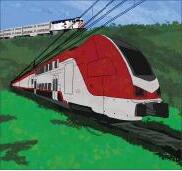
“We’re talking cleaner, greener, quieter, more comfortable, more connected, and better amenities on board,” Liberman said. “It’s a much better way to travel and our diesel (trains) have put in a lot of good work. But, these are trains that have been in service for multiple decades and are approaching the end of their useful life.” Loomis said that one of the most signifcant environmental advantages to the electric train is the mitigation of air pollution.
“If you’re taking cars of the road, that’s good,” Loomis said. “If you make zero emission trains, then you’re decreasing the footprint of that agency. But, unless you get more people on the trains and less people driving, is it afordable to continue?”
Senior Taiya Hussein, who takes the Caltrain with her friends, said she will increase the rides she takes on future trains because it would be a more sustainable option than driving. “I’ll use the electric train more because it’s better for the environment, so I will feel better about my decisions,” Hussein. “It makes me more conscious of how much I use my car, and makes me want to use the train more often, considering it will be environmentally friendly.”
Olivia Atkinson News & Opinion Editor Gabriella Gulman Business Manager LIAM LIVINGSTON/USEDWITHPERMISSION Liberman said the electrifed train has multiple advantages over the diesel train.